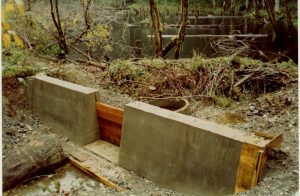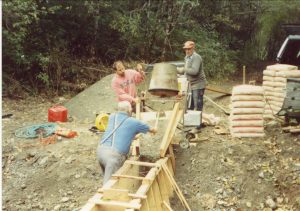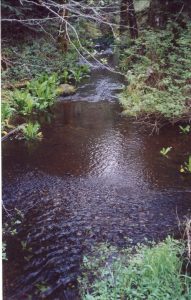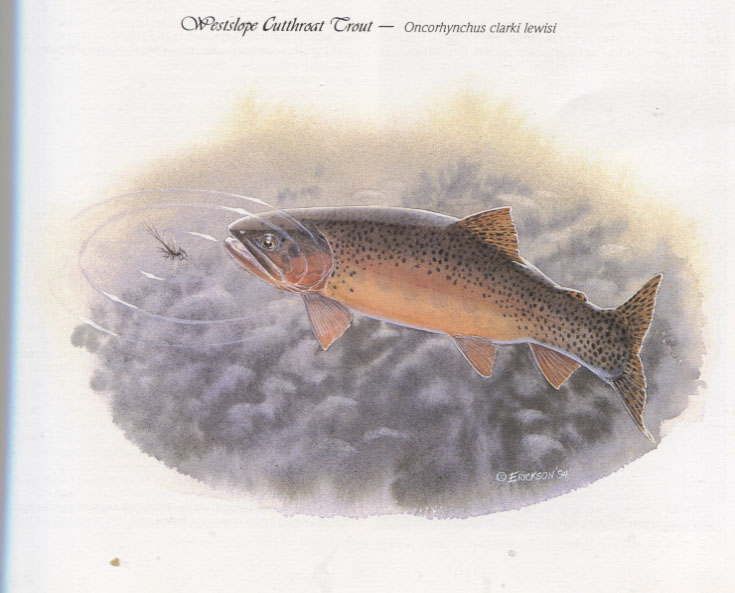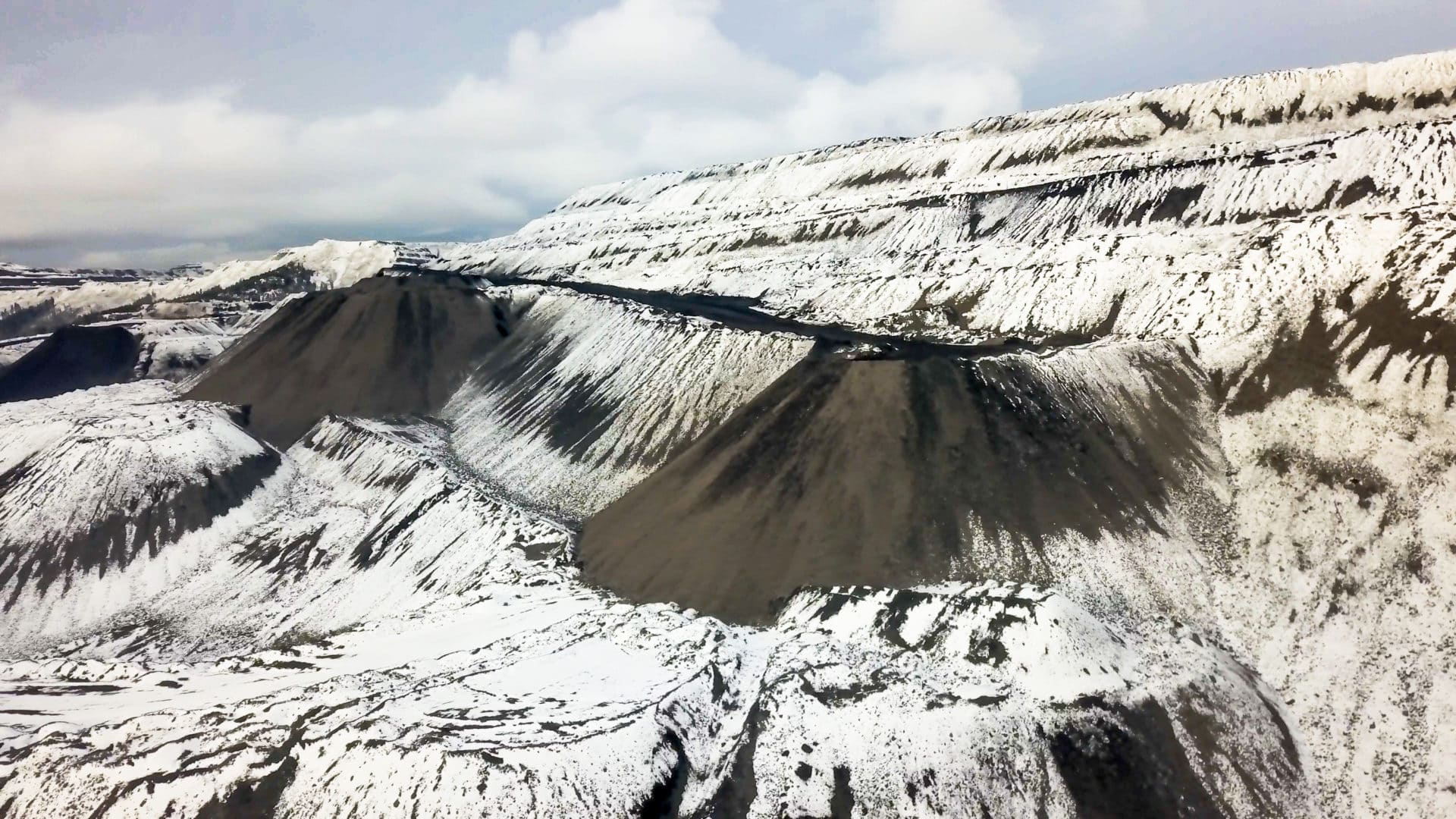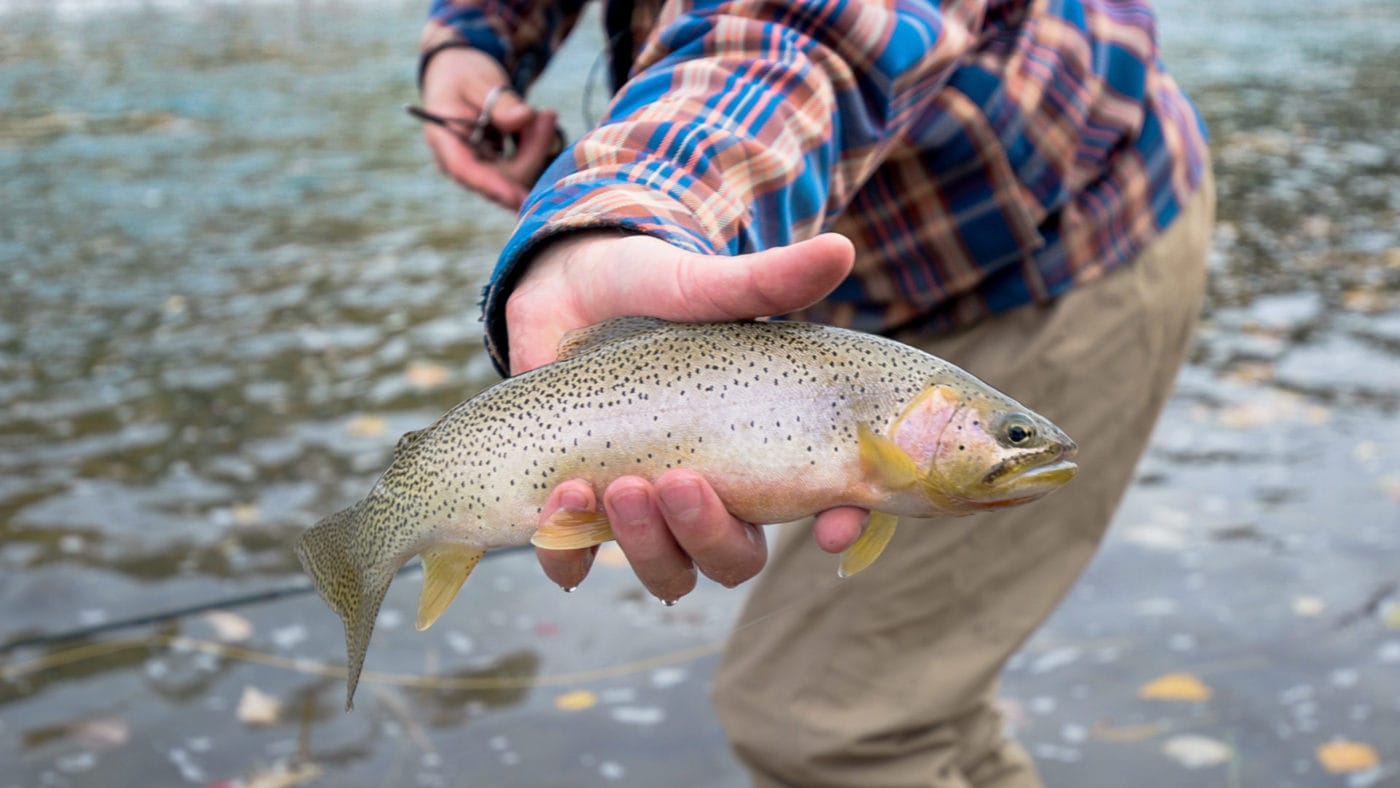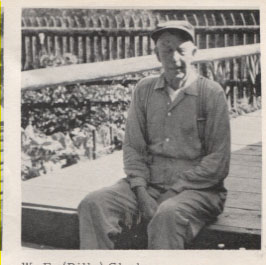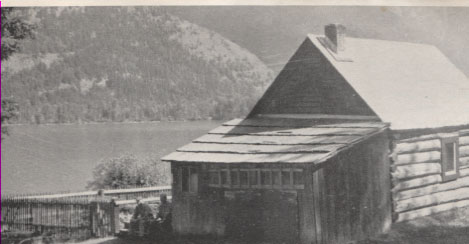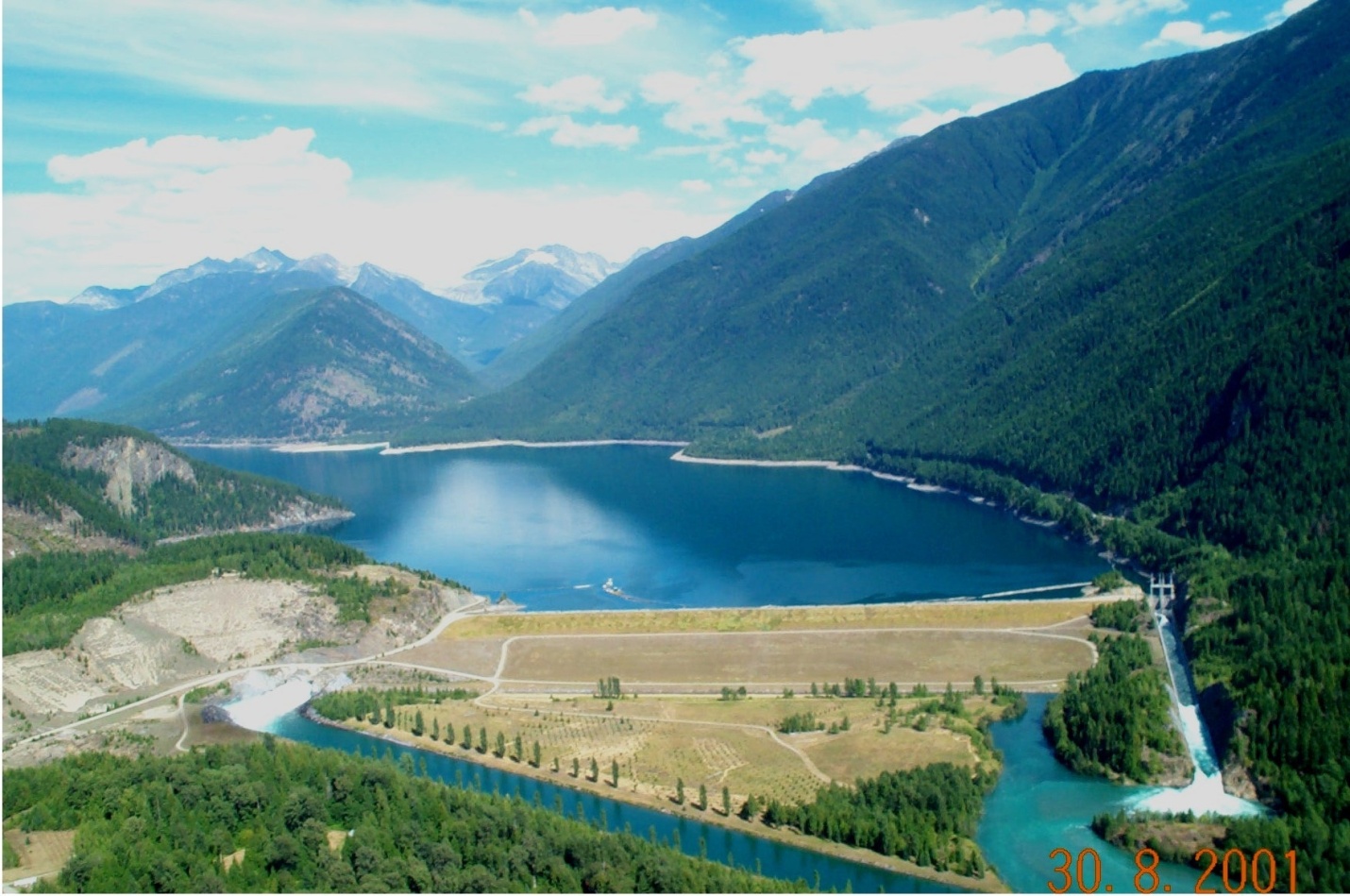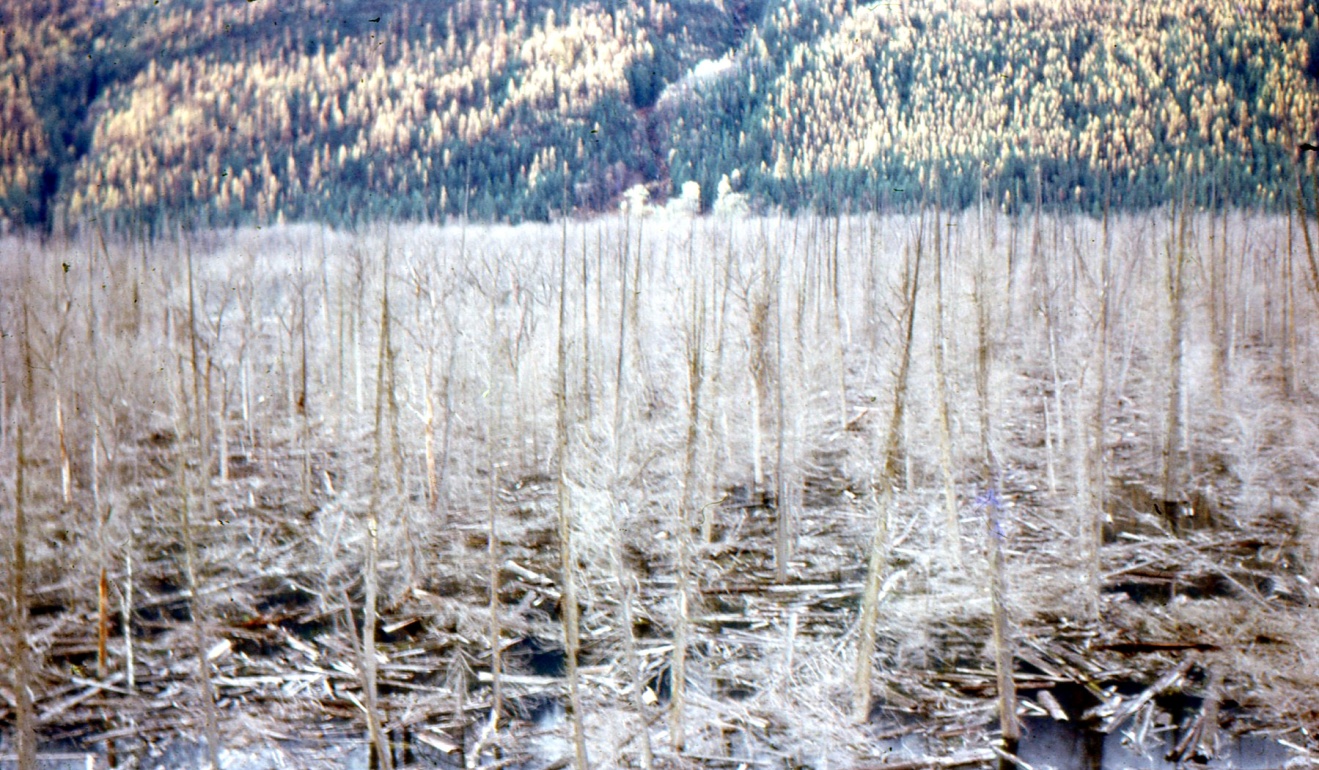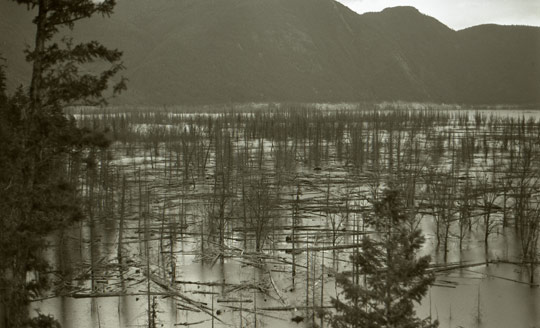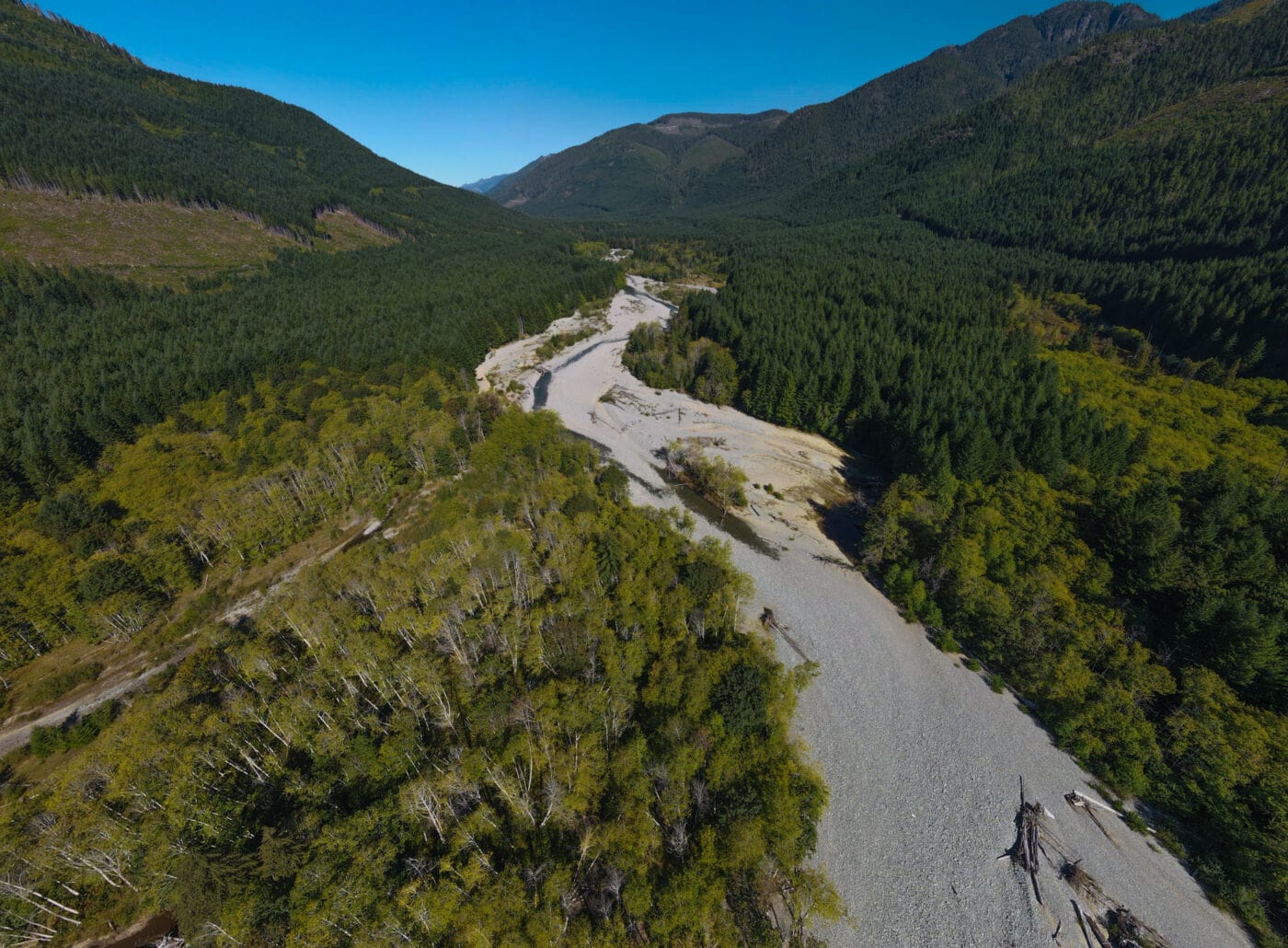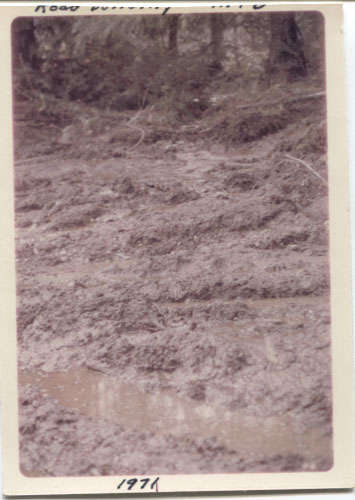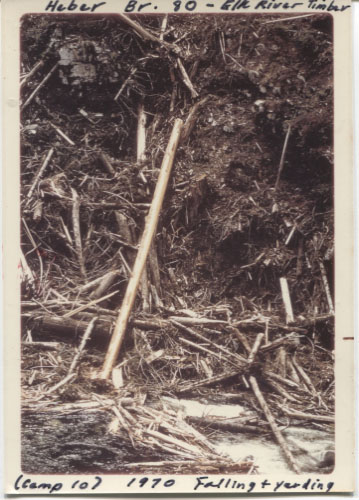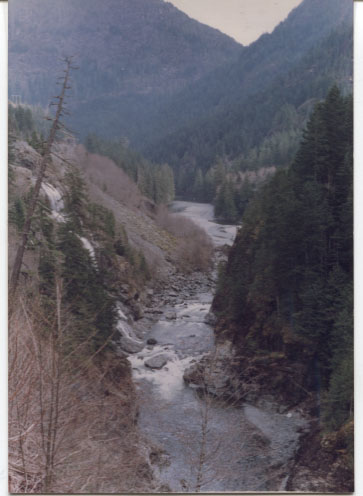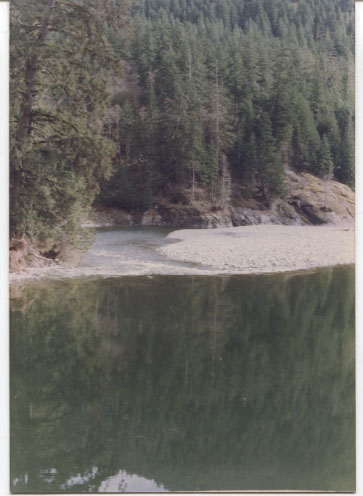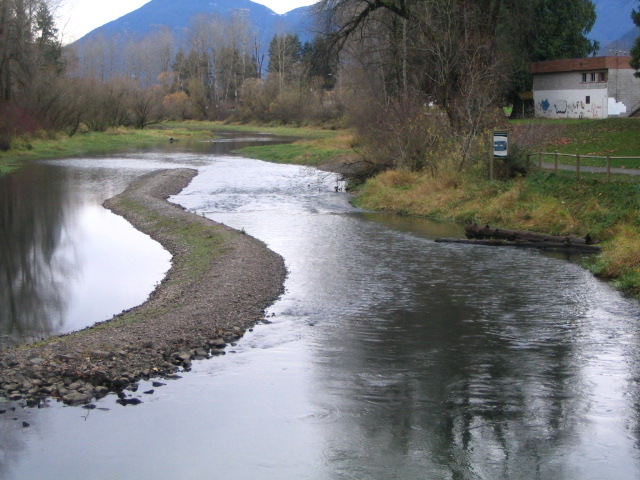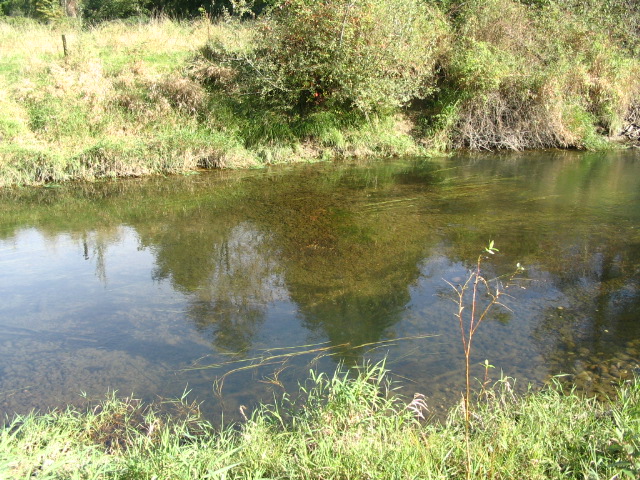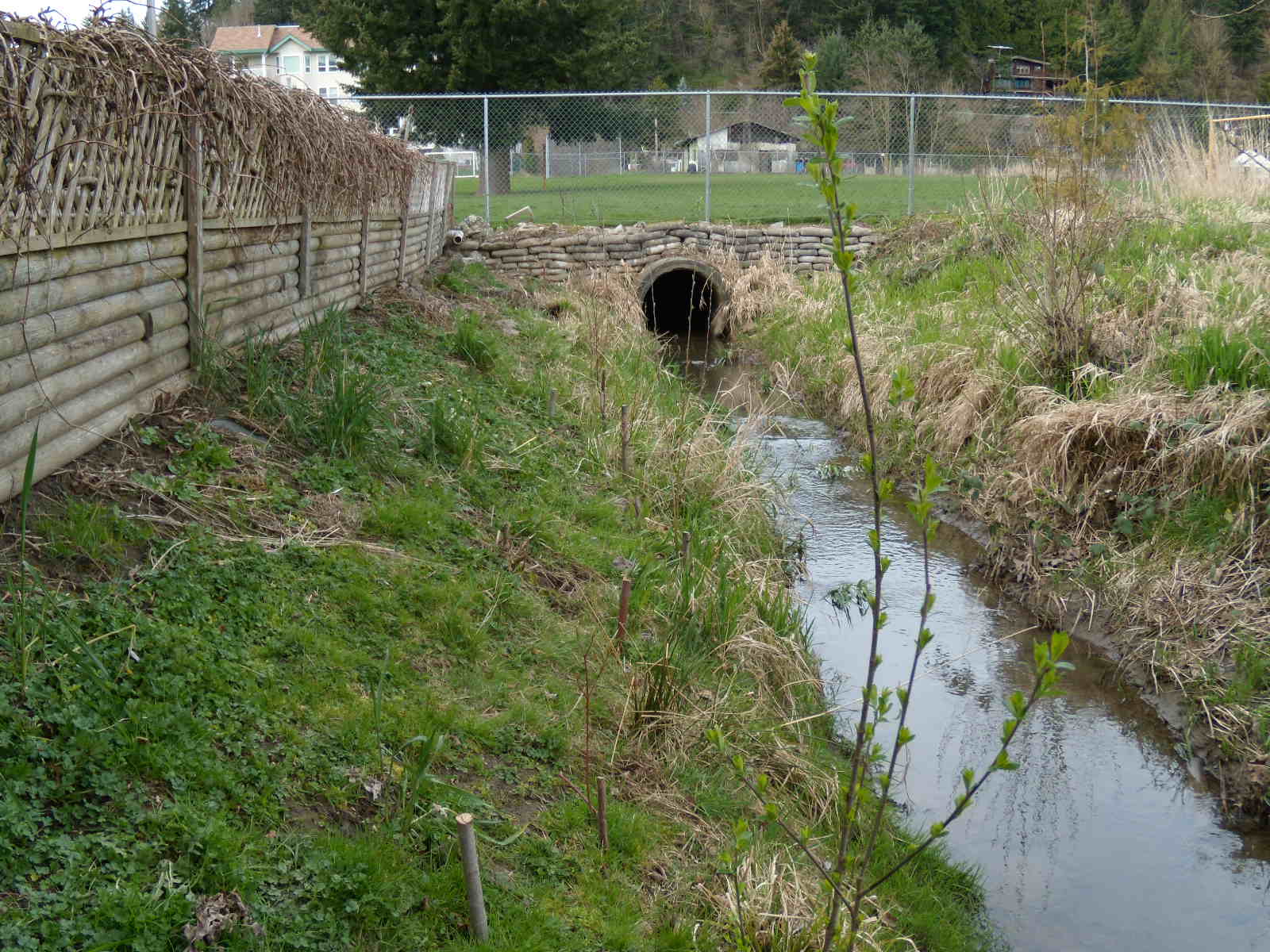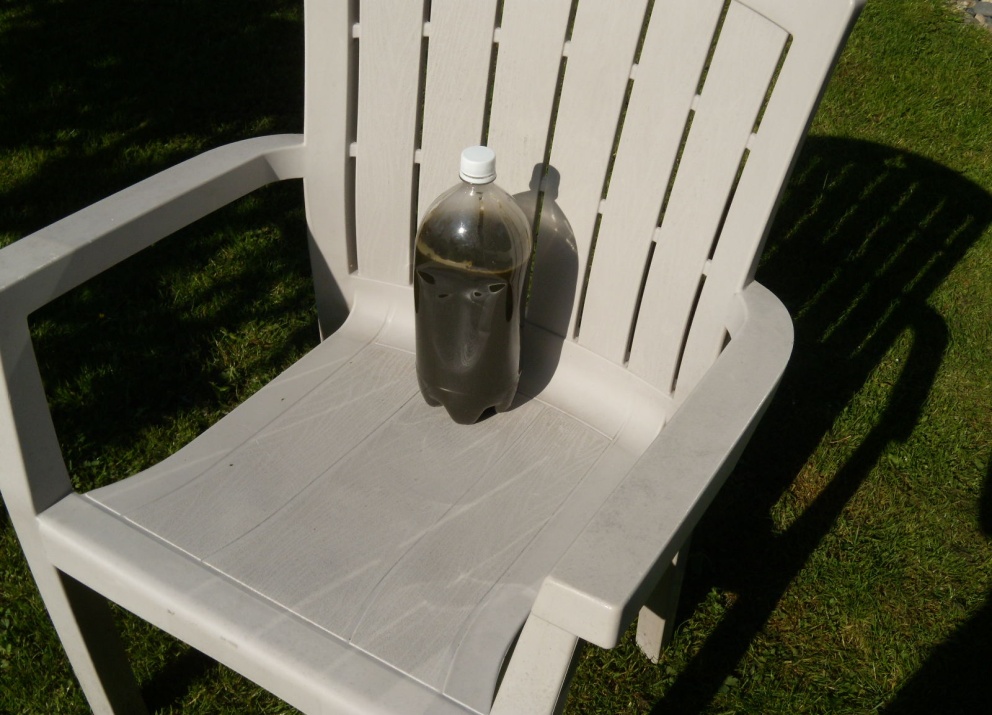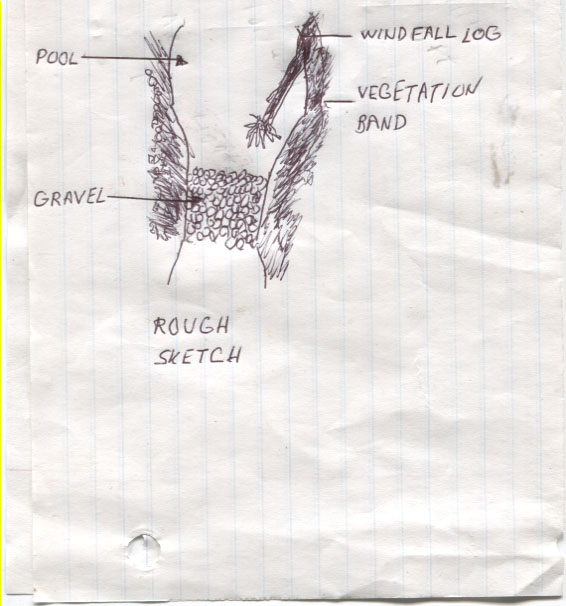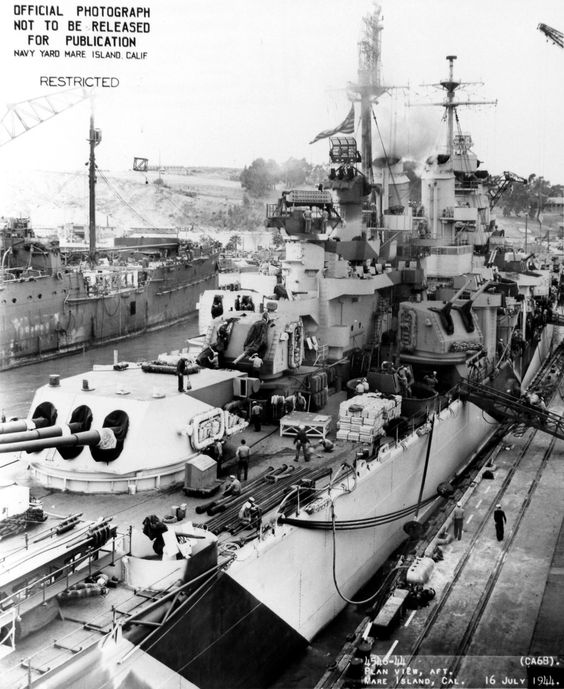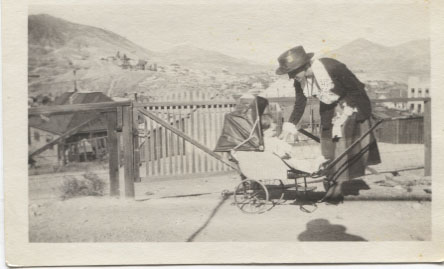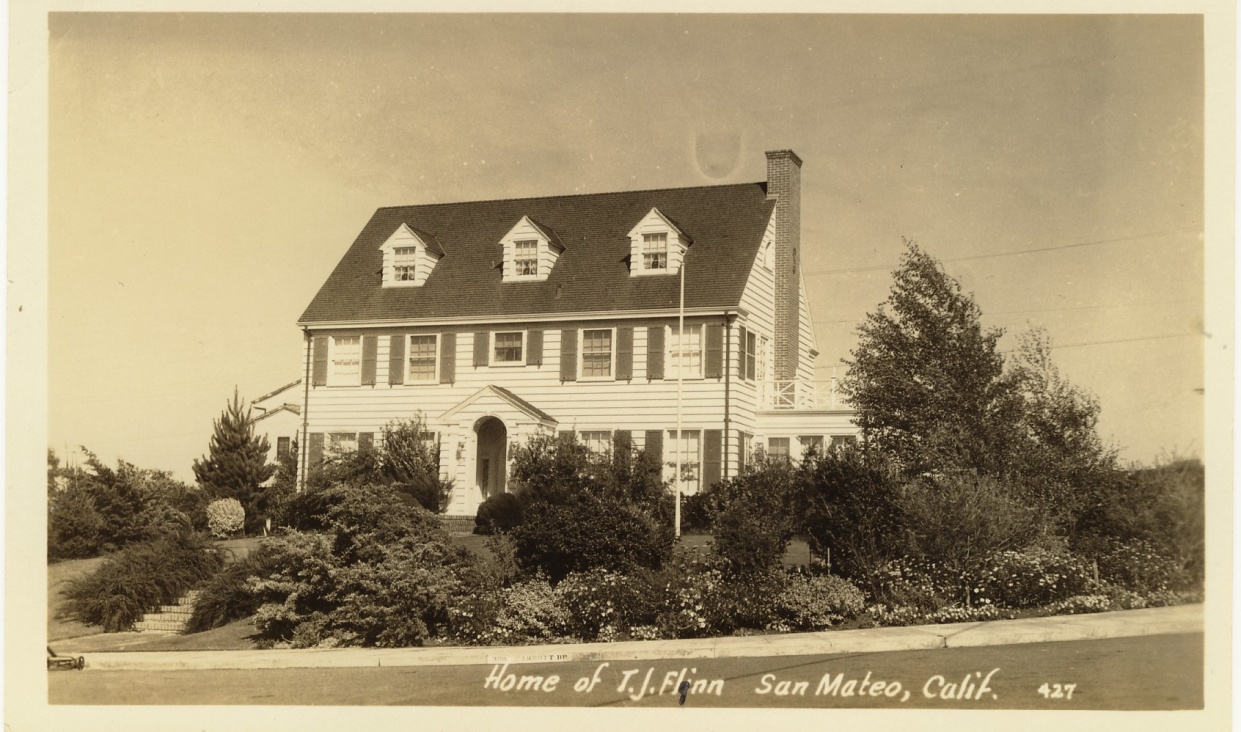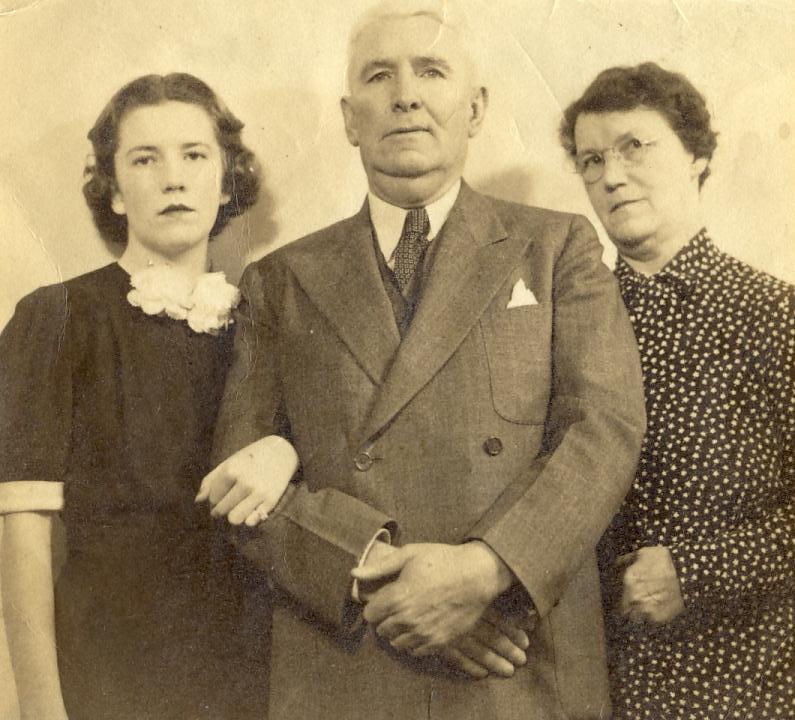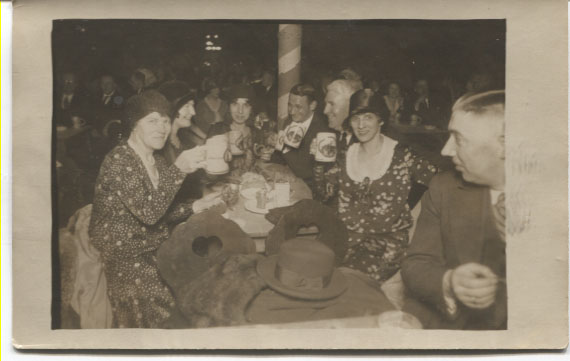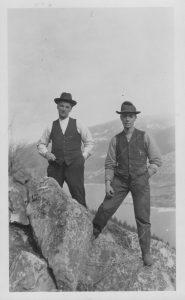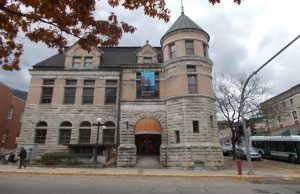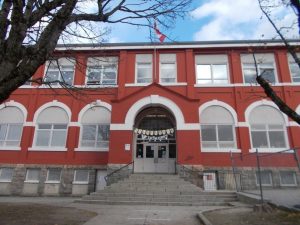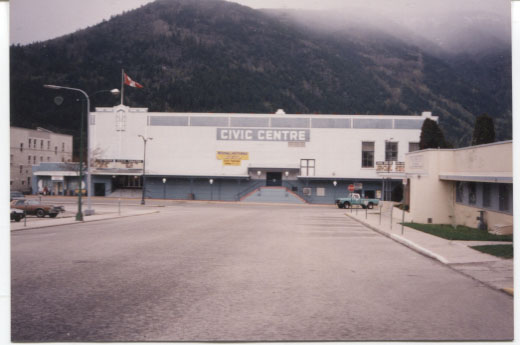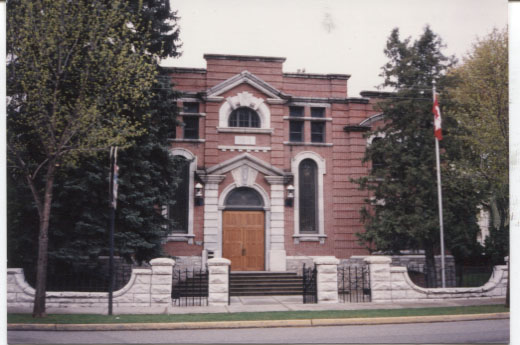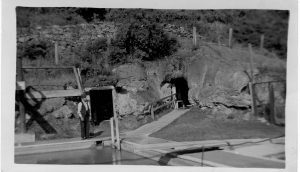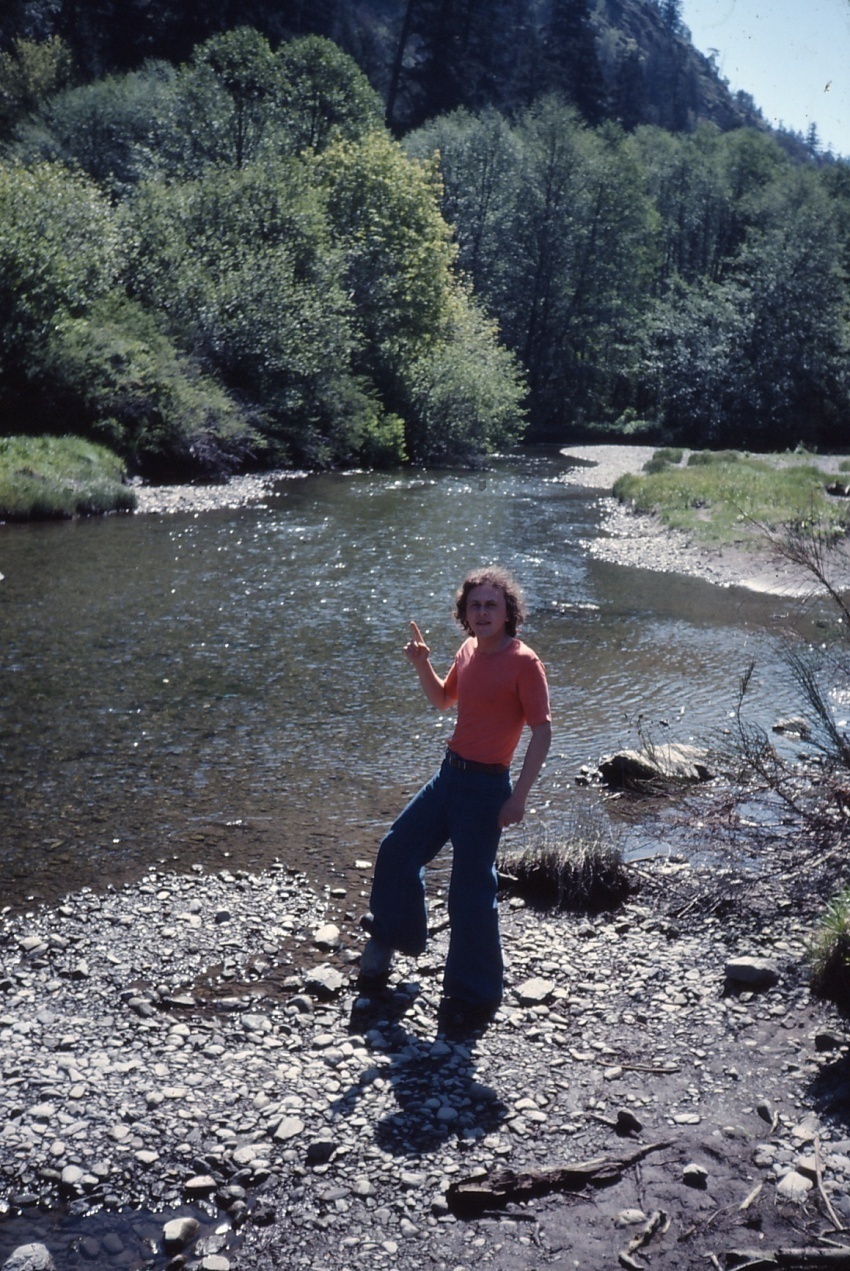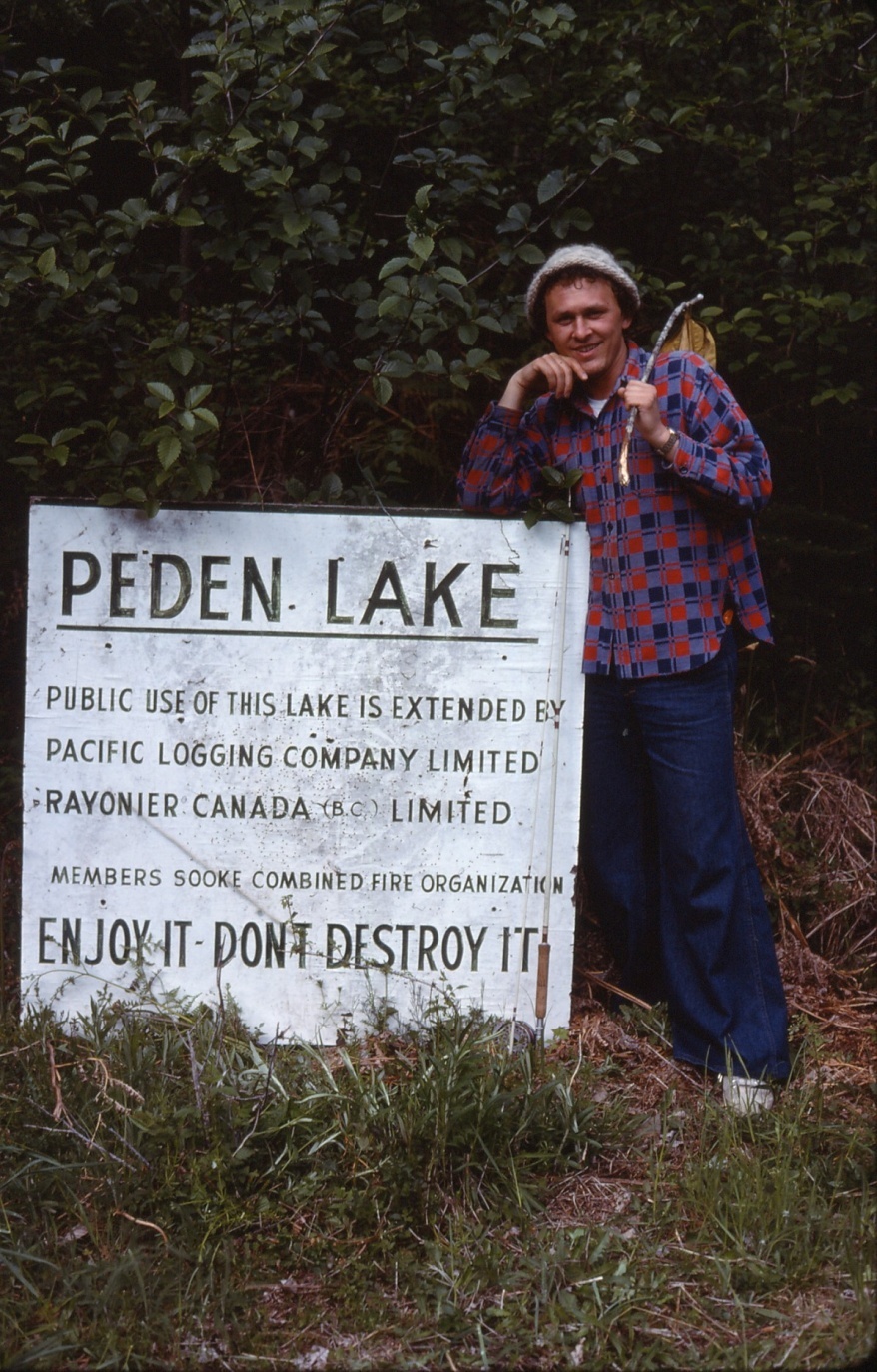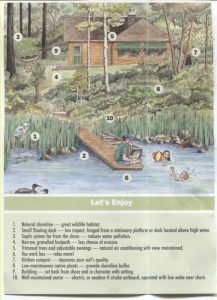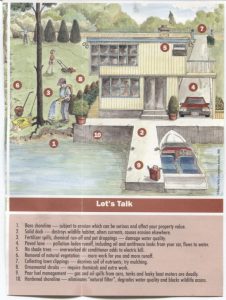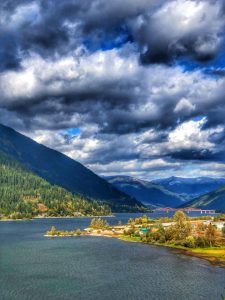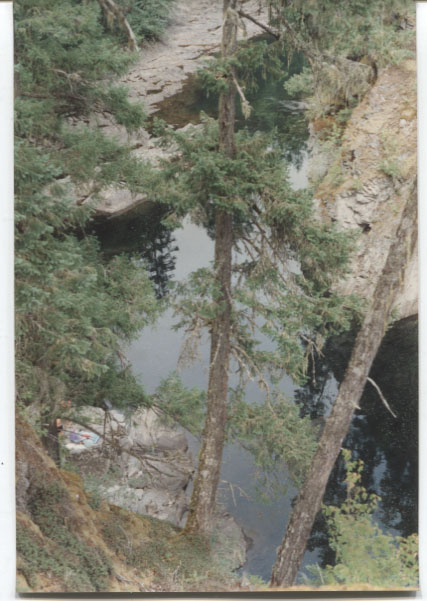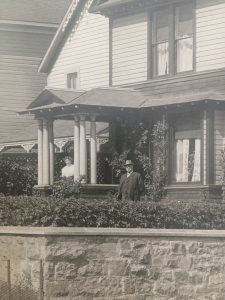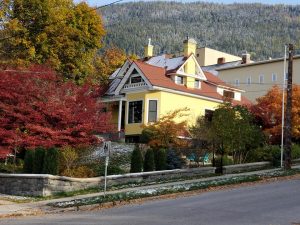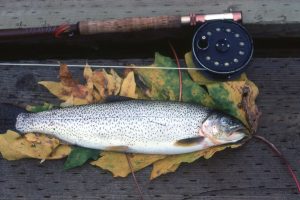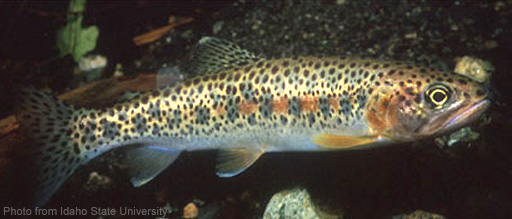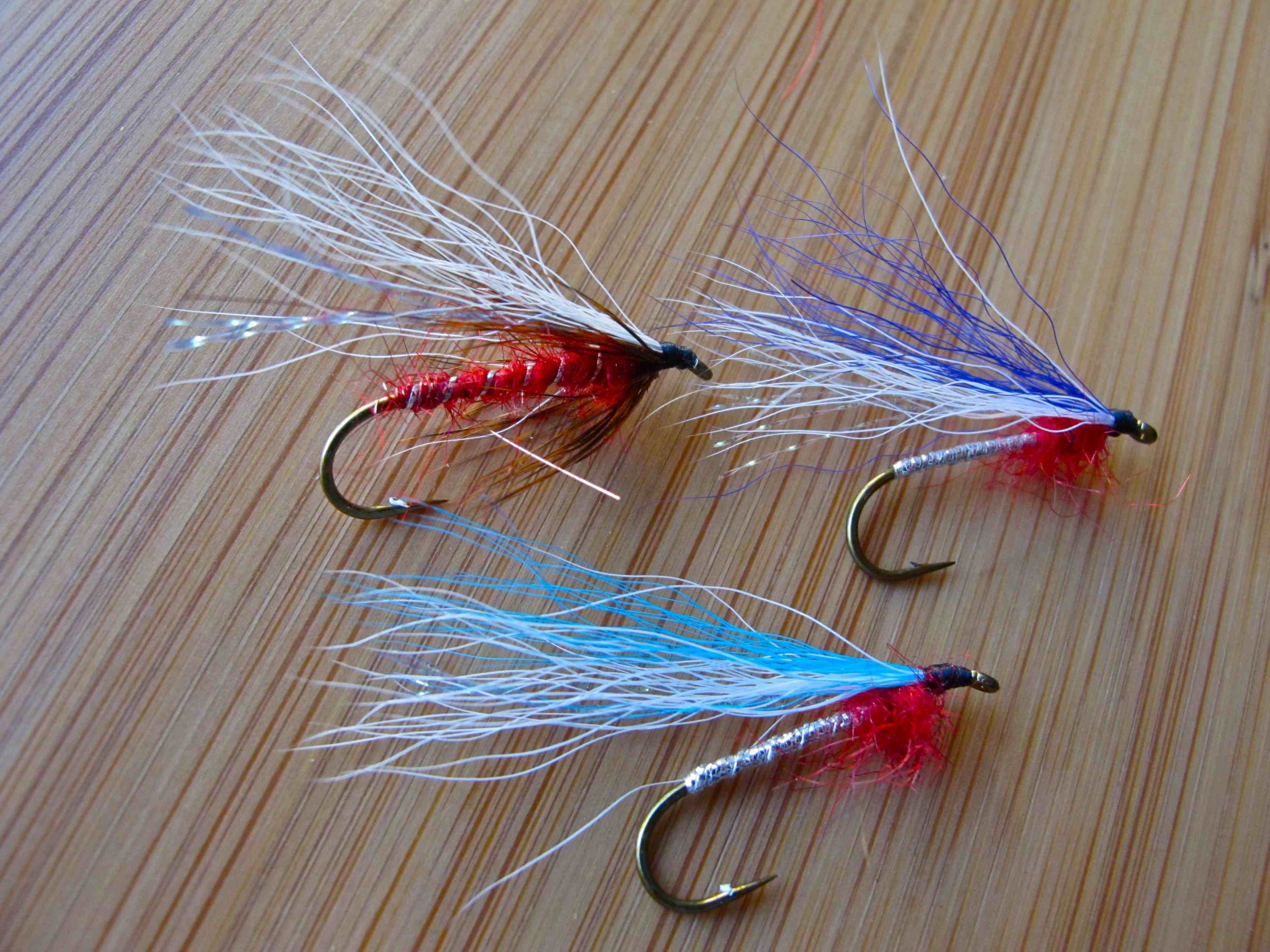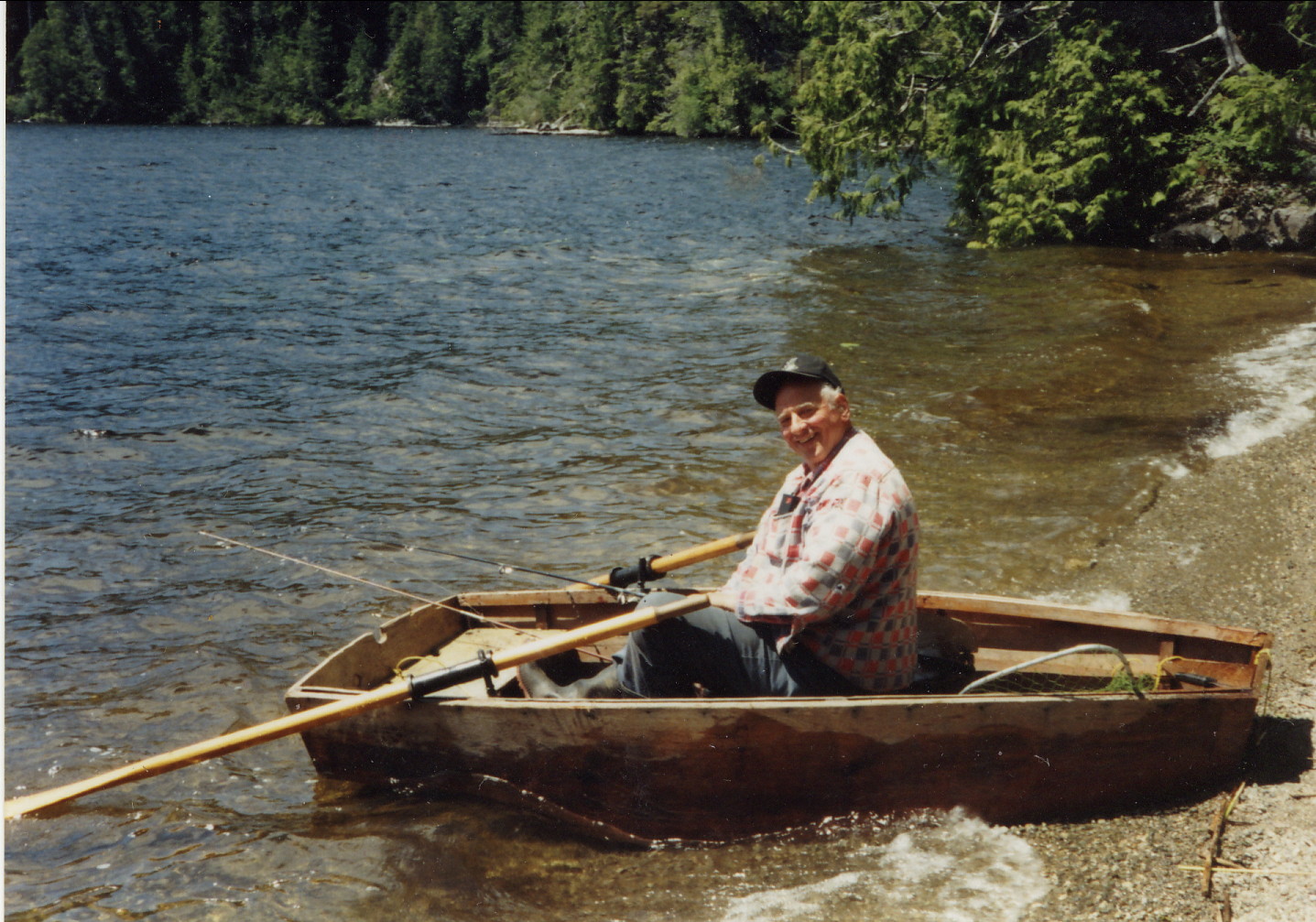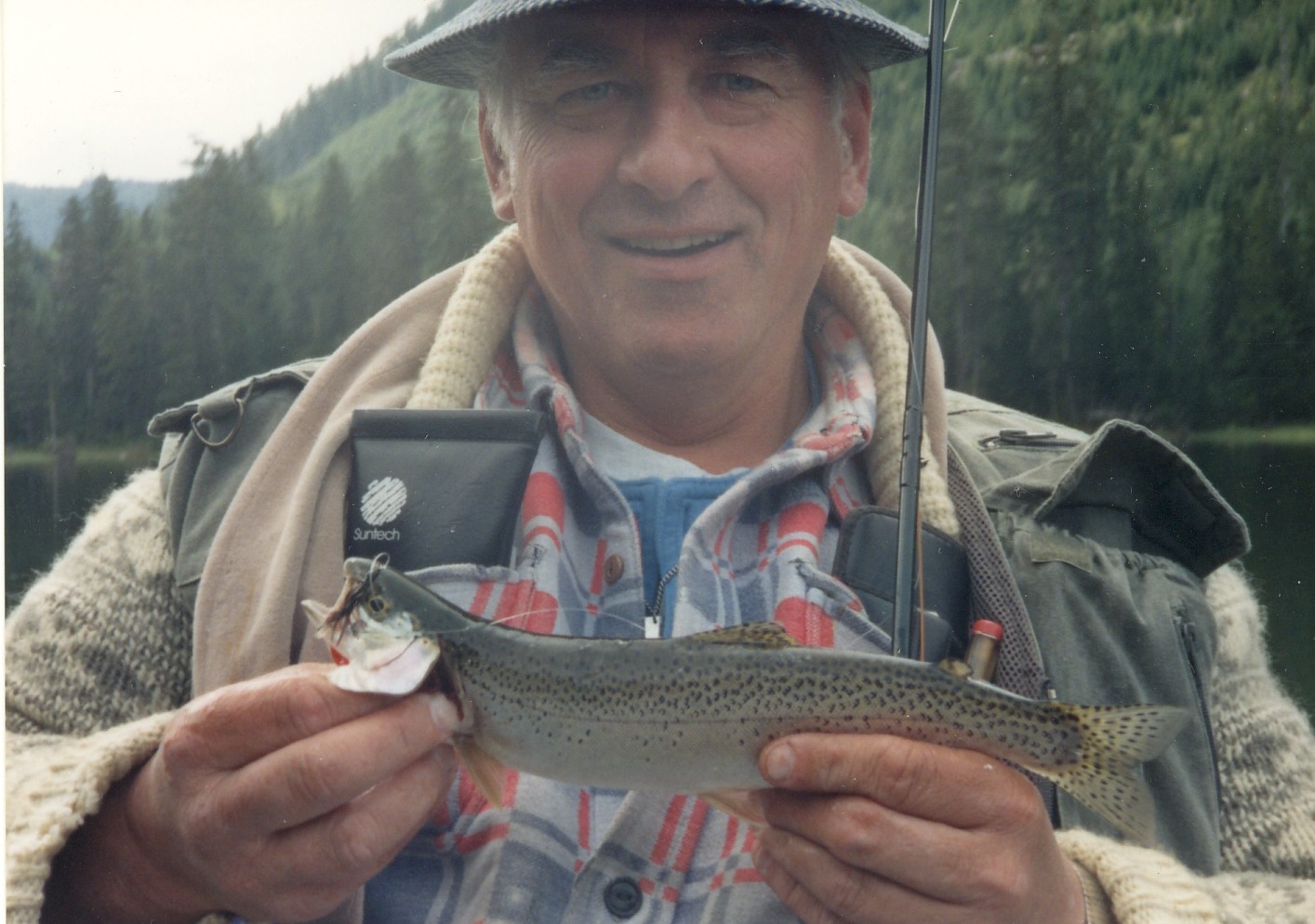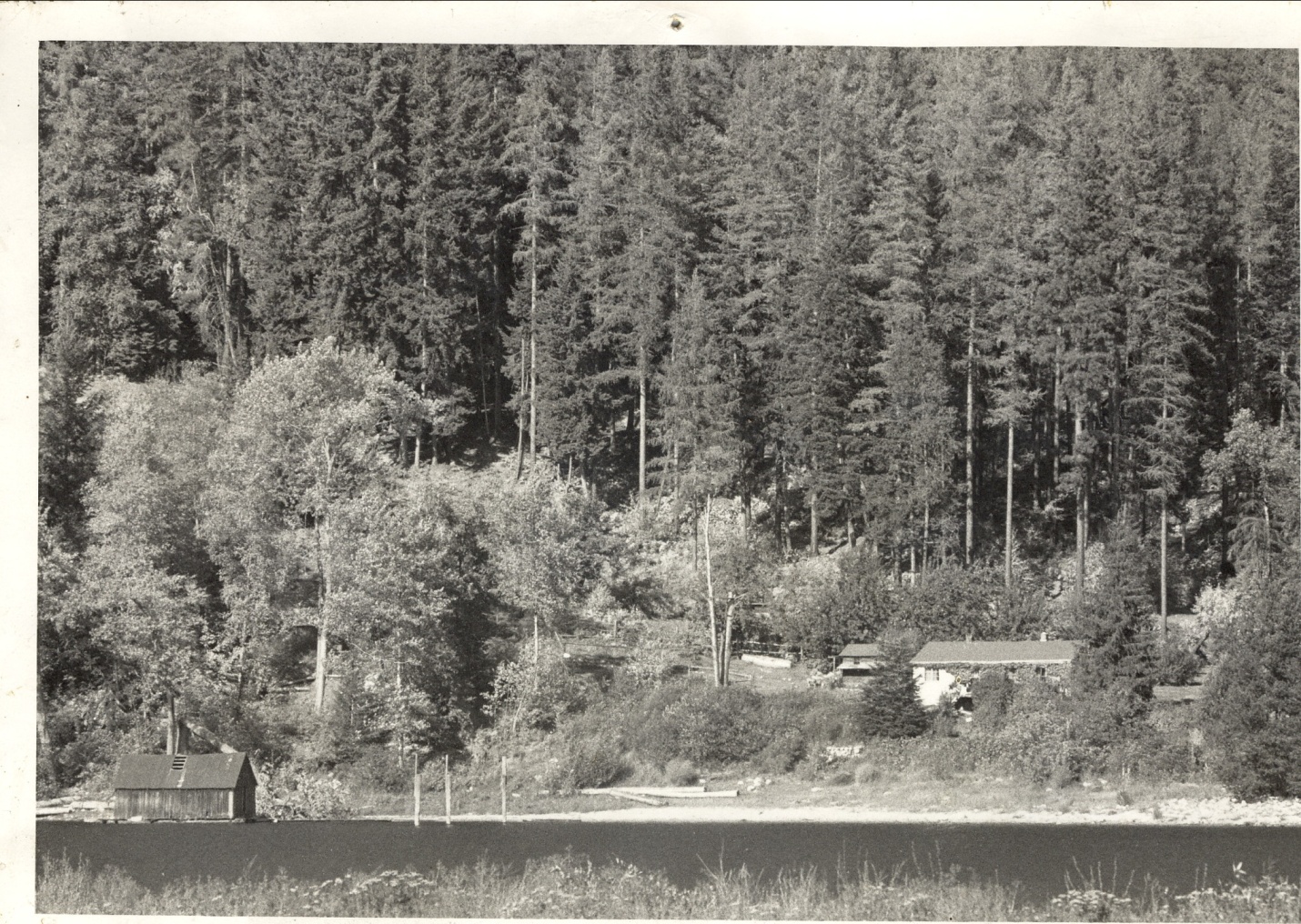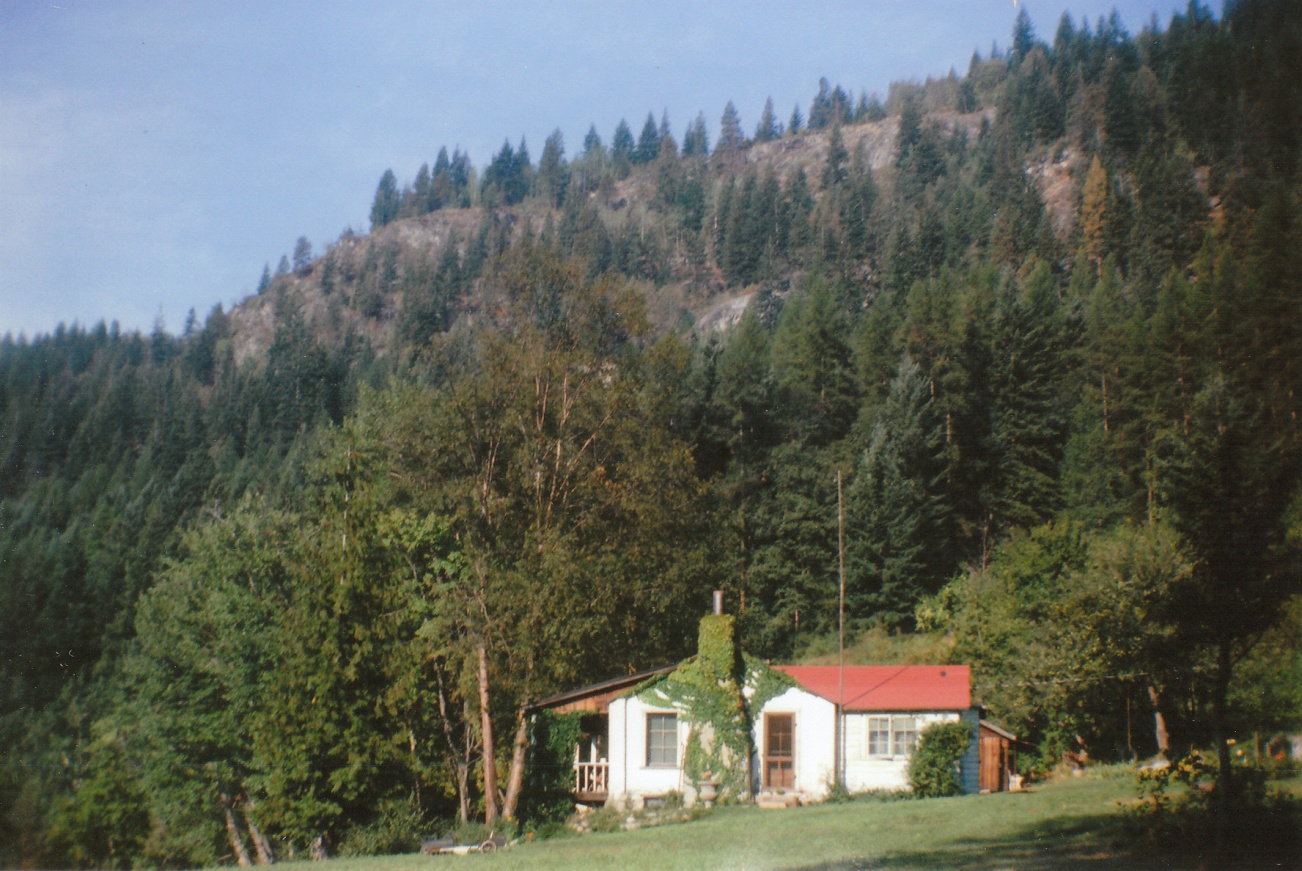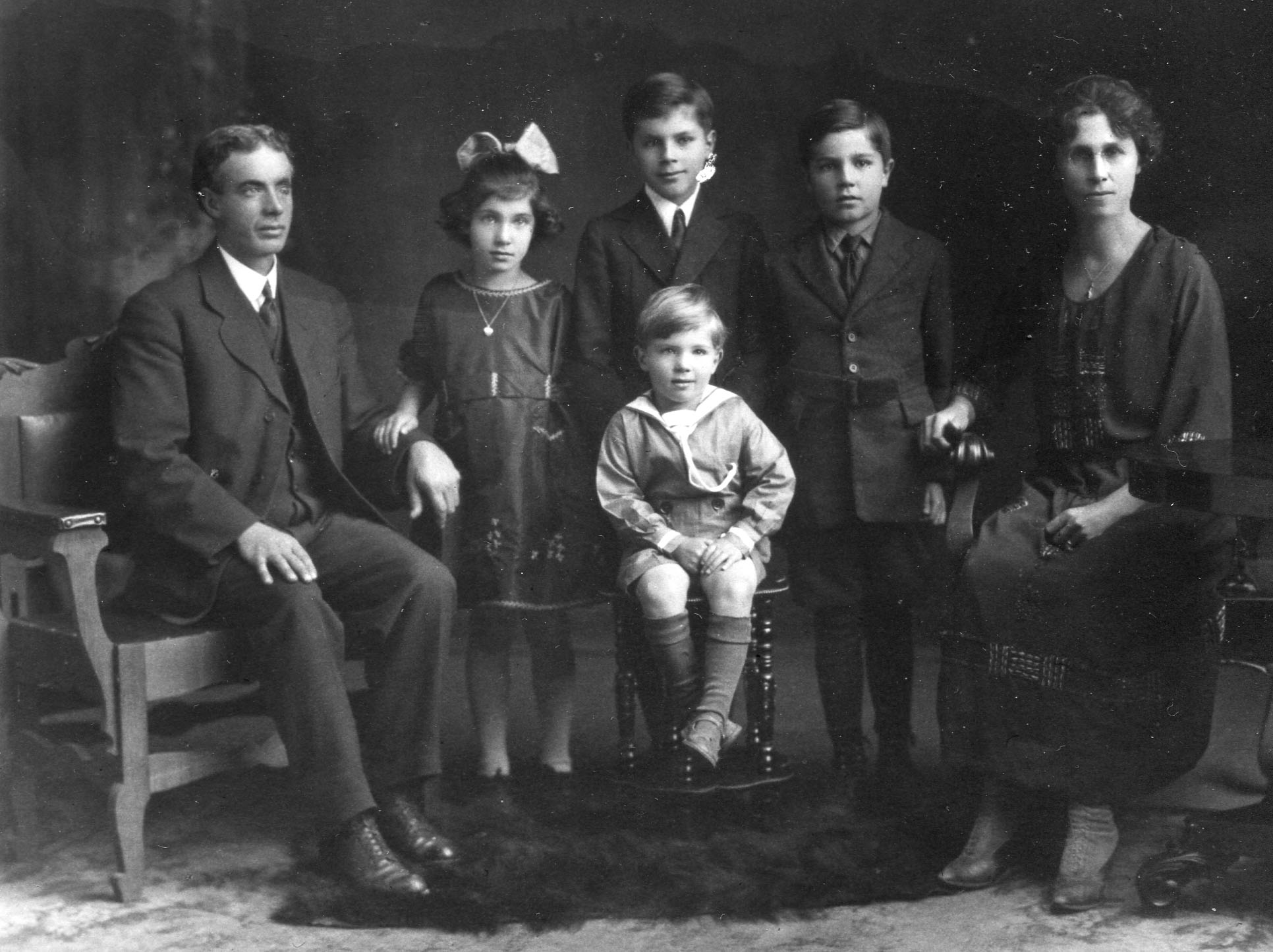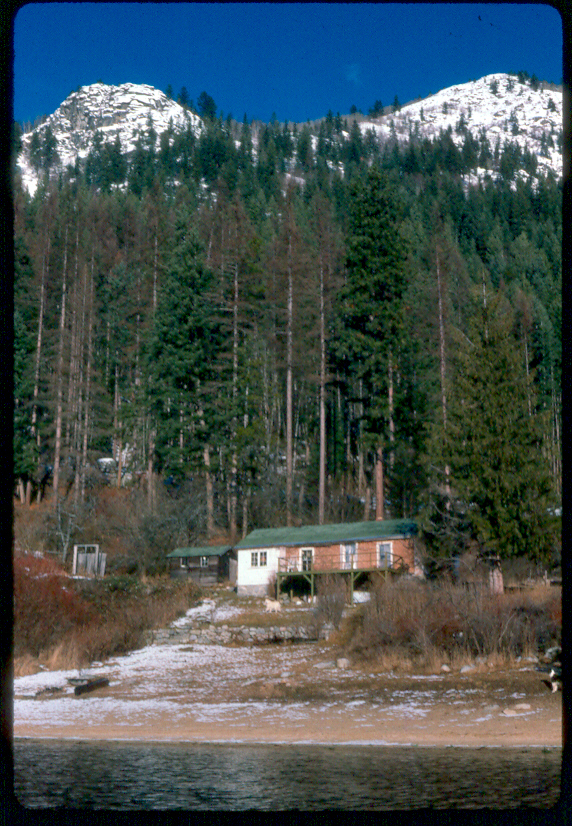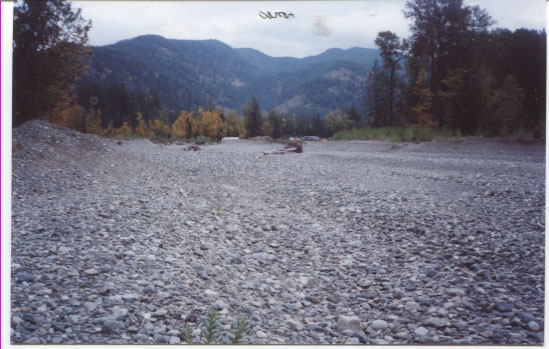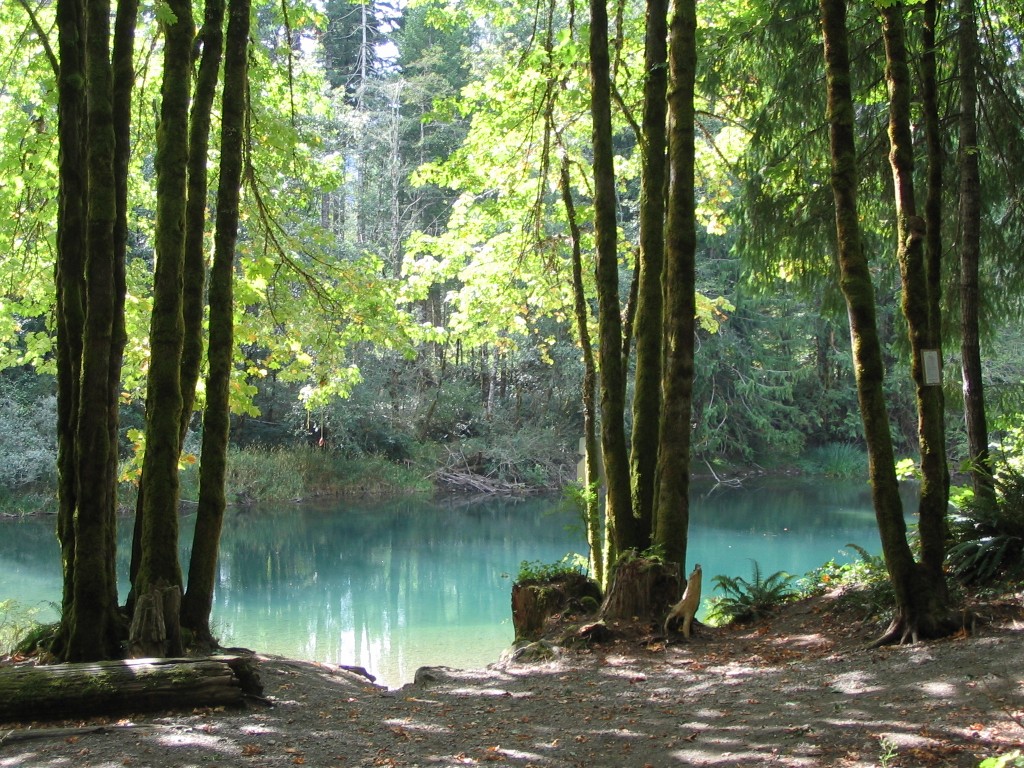My Mother’s Canada
My mother was born Helen Jane Flynn on May 12, 1920, in San Francisco. Her father was Thomas Joseph Flynn, a mining man in Nevada and Northern California and a shrewd investor who was once president of the San Francisco stock exchange. Her mother was Hazel Sanderson, a nurse who originally came from Massachusetts. Her parents became quite wealthy and built a large home on Parrot Drive in the Baywood neighbourhood of San Mateo, CA just south of San Francisco.
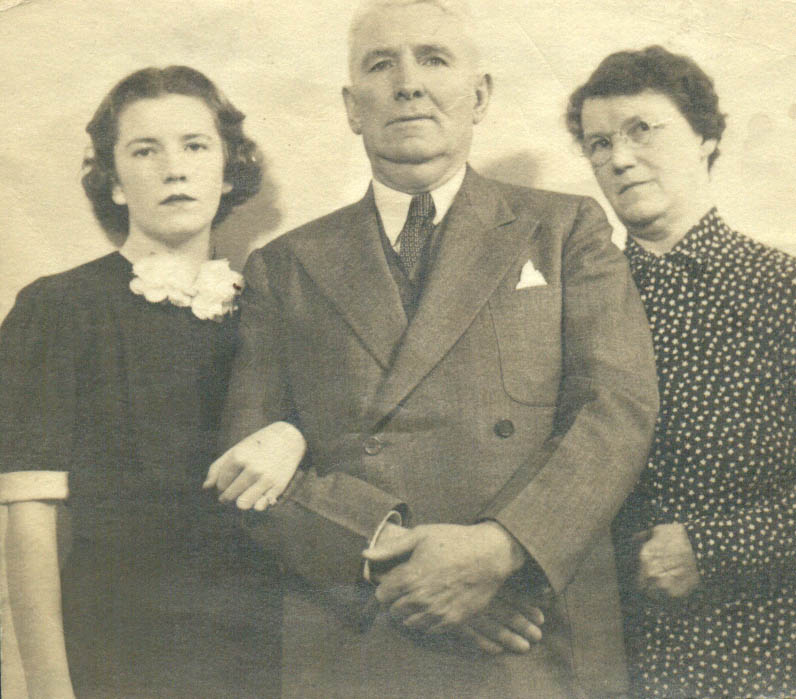
Mother on left then Pappy and Nana Flynn
My mother had the best of all worlds. It was an area of great beauty with the gold hills of the East Bay cradling the bay’s blue waters. On the west were the Santa Cruz Mountains, Crystal Springs Reservoir and the Ocean Beaches at places like Halfmoon Bay. Mother went to private schools and took training in voice and comportment for a young lady of means. I doubt if such a life of privilege exists anymore. My mother even had her own play house which could happily house a small family today. She also had a number of suitors who took her to places and events frequented by the well off.
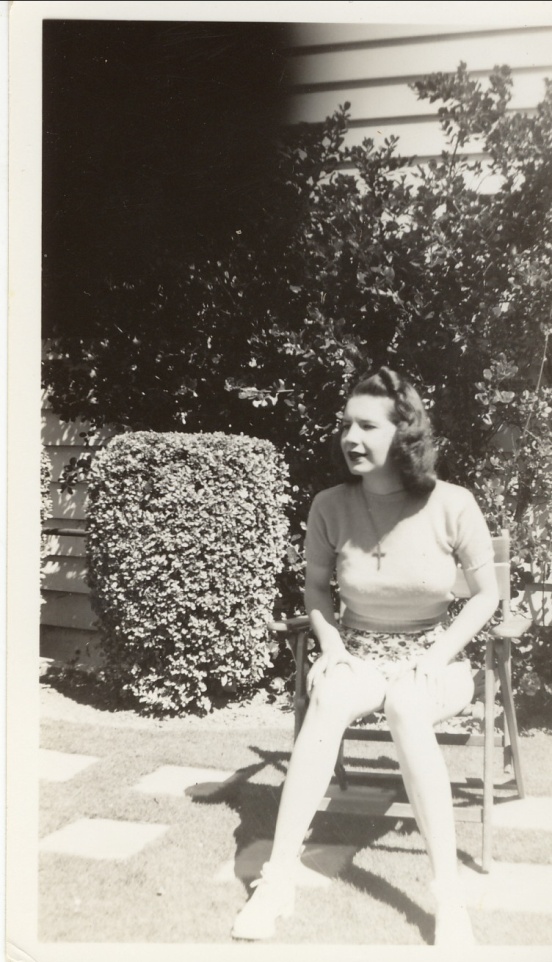
Mom at home in Baywood
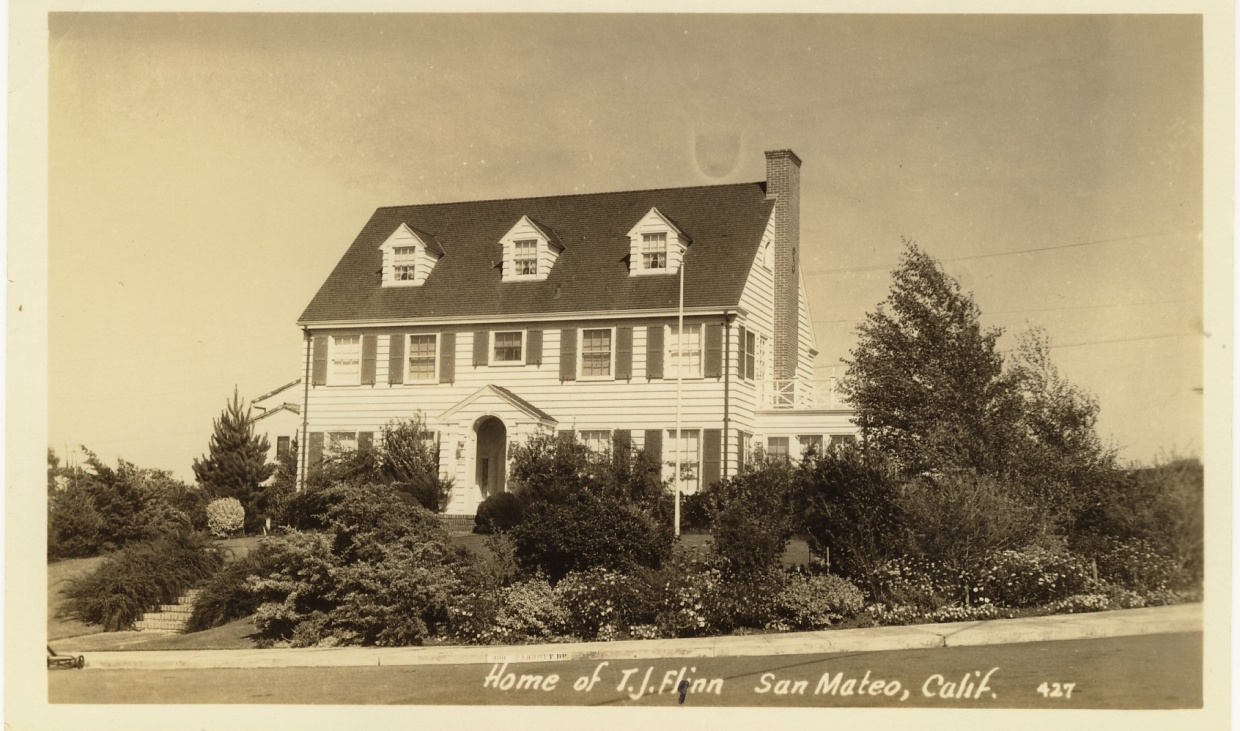
The Flynn Home at 373 Parrot Drive
Into this setting comes my father, a student at Santa Clara University down the peninsula from San Mateo and close to San Jose. Not exactly a poor farm boy, my Dad was from a different background and wildly different environment. Indeed. Dad was born in Nelson, BC in 1918 and was the son of pioneer builder John Burns and Rose Yvonne Swain, a Métis girl from Northern Saskatchewan.
Mother and Dad met at a party or dance at Santa Clara and were married in May of 1940. Now is when the story becomes more interesting. Remember that my mother was a California girl that had grown up with maids and gardeners and had been coddled by her parents and her Auntie who lived with the family as kind of an executive assistant to Grandpa Flynn. I wonder if Mom ever cooked or even decided what to wear on day to day basis let alone live in a cabin with a wood stove and shovel waist deep snow.
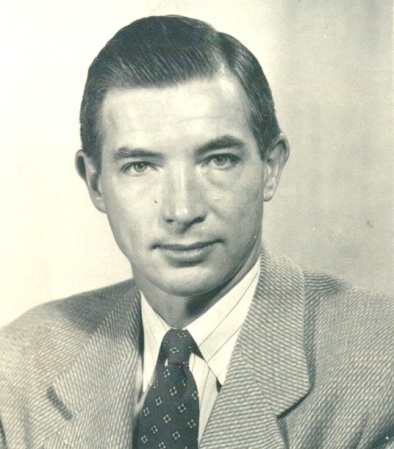
Dad as a young man
Not long after their honeymoon in Carmel, CA, the newlyweds travelled north to The Kootenay Region of BC, a place my mother had never seen but about which my father had likely waxed poetically. Her first views of Canada were shrouded by the low cloud and heavy rain so common in the month of June. What she could see of the country was burned off by a recent forest fire and the black spires and snags of dead timber were not exactly what the tourist brochures touted and probably contributed to a worrisome doubt: What have I done? Is this it? Her first views of Canadian towns though the misted windows of the car were of the Kootenay metropolises of Ymir and Salmo. Both had seen better days and some considered Ymir to be a ghost town.
Mom was likely much more impressed with Nelson which is a gem by all standards of measure.
They lived in a good house on the corner of Stanley and Latimer Streets but soon returned to California. I remember little of those years which must have been around 1943-44. I do remember that Pappy Flynn was very patriotic and conservative. He and Nana had a huge painting of George Washington in their ornate living room where people seldom went and I can remember him and Nana railing against Roosevelt and the Unions in the form of the AFL and CIO. In the yard was a tall flagpole and large flag that was kept clean and sparkling. I also remember Nana being an ace cook who gave me a small glass of beer with lunch and Auntie teaching me to read. Pappy Flynn had a good library of books by Brett Hart, Joaquin Miller and William Joseph Long – stories of the pioneer west
Then it was back to BC and Dad was off to the Canadian Army where he was stationed in England during the war. Mother and I lived in Kaslo in a small house on Front Street across from the wharf and where the Moyie (a beloved Kootenay Lake sternwheeler) is now parked. I have been told that Grandpa Burns built the house for her to live in. He did build a number of houses and other buildings in Nelson, Ainsworth and other West Kootenay towns.
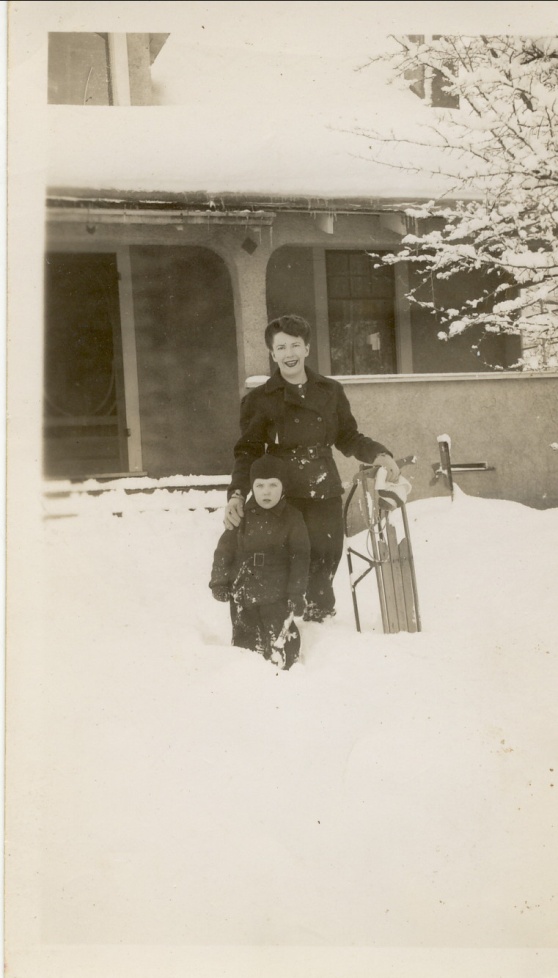
Mother and I in Kaslo 1940’s
I was very young but remember the King George Hotel, and have vivid memories of the May Day celebrations where little Japanese girls in white dresses danced around the May Pole. I also remember the beautiful cherries that grew right on Front St. and were picked by everyone. These cherries were larger than the largest you see today. I was told their size diminished when the trees were infected by a pathogen from the ornamental cherries people started planting all over. The only business I remember was Eric’s Meat Market. Mother liked to shop there because he was very kind to her.
Then back to California once more where my sister Kathleen was born and I started school at St. Matthews. I planted a flower garden of marigolds and nasturtiums at Parrot Drive and helped Roy (the Filipino Gardner) in the main garden. I went to a baseball game with Pappy Flynn and up to his office in the San Francisco Stock Exchange. We took the train and had lunch at the Old Poodle Dog where uniformed waiters served ice cream in little silver cups and all knew Pappy.
It wasn’t long before we were on the way north again. I clearly remember that trip because of the strong heat in the Sacramento Valley. We stopped at a restaurant called the Nut Tree and at several drink stands shaped like giant oranges.
This time it was Ainsworth where we landed. Of all places I have lived, I liked it best. We lived in a house called The Wheeler which was built by Mr. A.O Wheeler, an important figure in the mining history of Ainsworth. The house rested on a flat bench above a short cliff by the lake. Uncle Jack, Auntie Helen and my five cousins lived next door in a large house built by the Giegrich family who ran the first store which was owned and operated by Pop Fletcher when we lived in Ainsworth.
But it couldn’t have been an easy place for mom. We arrived there at the beginning of a very hard winter. The lake froze. A path for the Moyie was kept open by the big tug the Grant Hall. We built a rink in the yard. Uncle Jack had played hockey in college. The winter was also hell for the deer. After stripping the fruit trees of bark, deer died in several places around town. There was a crusty snow that cut their legs so it was possible to follow them to their final resting places. We had a wood stove in the kitchen for cooking and larger one in the living room for heating. I don’t think there was insulation but Uncle Jack’s house had torn up newspaper in the walls which must have helped some. But mom did pretty well for herself. Auntie Helen helped her – Helen was a great cook and could have written volumes on country living. She and Uncle Jack ran the Silver Ledge and also had duties at the pool which Grandpa Burns had built many years before. Betty Olson stepped up for Mom in a very big way helping in every way she could. Mom’s health was starting to flag even then.
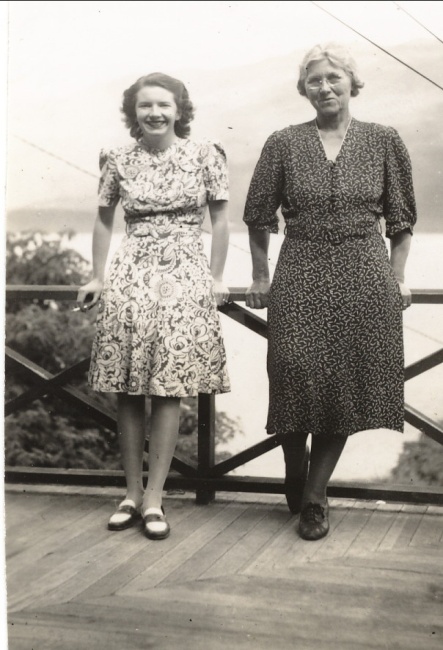
Mother and Rose Yvonne at Hot Springs Hotel in Ainsworth-1940’s
Ainsworth was an ideal place for kids and there were lots: Hawes, Lane, Turner, Fletcher, Isaacs. We roamed the country as we pleased. We swam all day at Uncle Jack’s beach in the summer then trekked our way up to the pool when the sun went down at the beach. The Burns kids all slept in little cots on the big front porch of the Wheeler. We told stories, read comics and watched lightening dance on the mountains across the lake. Sometimes we would go fishing with Dad or Uncle Jack up Woodbury Creek or Loon Lake and we often went over to watch George Hobbs come in from fishing in the evening. He often had some fine rainbows and Dollies to show us. George and Ruth Hobbs were kind of defacto grandparents to many of the Ainsworth kids. In fact, all elders were. We called them all Ma and Pa or Grannie or Grandpa. It has been said that it takes a community to raise kids. Ainsworth of those days was a prime example.
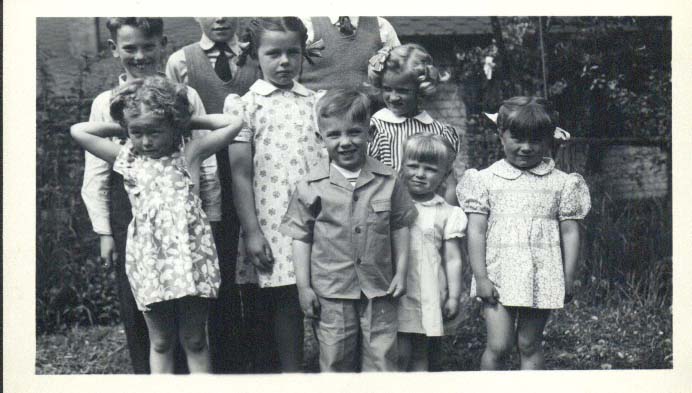
Ainsworth party: Top row – Jackie Fletcher, Flash Olson and Frisky Olson
Middle row: Brenda (Shadow Foot) Brown, Dorothy Hawes and Lynn Burns.
Bottom Row: Teddy Burns, Jeannie Burns and Peggy Burns
In the fall, dad and I would often go hunting. There were many varying hares (snowshoe rabbits) in the woods above Ainsworth so we shot lots as well as quite a few grouse. We always had trout and we shot a couple of deer at Peterson’s Ranch – a whitetail spike and a four point mule deer. Fall outings included huckleberry picking and harvesting apples. Dad and I also explored many of the old mines above Ainsworth. Both dad and Uncle Jack had semi active claims. One summer, we went on a holiday. We just crossed the lake to a place we called Honeymoon Bay near the mouth of Indian Creek. We only stayed for a few days because an obnoxious bear drove us off but I had the best fishing days ever fly fishing at the creek mouth.
The end of summer also meant school. There were eight grades and one teacher. Kids skipped quite a bit. If there was one kid in Grade 2 but 3 in grade 3, the Grade 2 kid became a third grader and so on. That’s how my cousin Peggy ended up teaching big Peace River Farm boys at age eighteen. Peggy was very bright and a good student but she got a few skips to ease her way. The teachers were Pat Currie and Margaret McDonald. They weaved magic for the eight grades in the one room school.
In the winter of 1949, my brother Tom was born in Kaslo. He was very pre mature and the sisters kept him a chick incubator for a long time at the Victorian Hospital. The hospital always seemed like just a big house to me but we were lucky to have it. There was also a doctor: Dr. Marion Irwin. There was another doc at Woodbury named Dr. Besecker. He didn’t practice but helped in emergencies. Despite Tom’s peanut size, mother and Betty brought him along fine after we finally brought him down from Kaslo. He had cerebral palsy but it didn’t slow him down until much later in life.
To my everlasting dismay, we packed up and went back to California once again. This time we didn’t go back to Parrot Drive and Baywod. We moved south for a few miles to the Hillsdale District of San Mateo and lived in a mega apartment complex which I hated. It was somewhat close to parrot Drive so mom spent a lot of time with her folks and the place was nice and modern. They built a huge mall near the apartments and are now in the process of re-purposing it. I do not remember much about Hillsdale where I learned to ride a bike and hung around with kids who are likely in jail now. Dad worked for Pacific Gas and Electric and things were OK but I missed my cousins and the green hills of Canada.
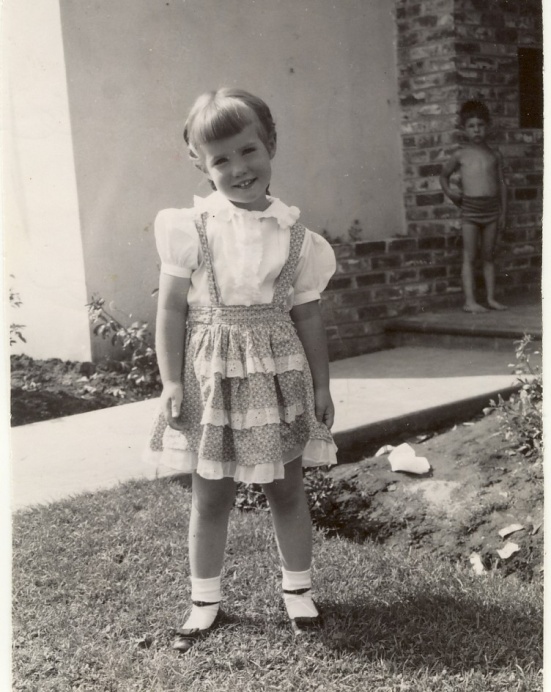
Kath at Hillsdale Apartments
I shouldn’t have worried because we were soon on the road north again headed to Nelson. This time we would stay for awhile. Dad worked for Gordon Burns at his Passmore logging and milling operation (TFL #3) and we lived in a small house at 1002 Kootenay Street well up the hill. His was a great place and I made some very good friends: Tom Ramsay, Gary Kilpatrick, the Goldsbury brothers (Freddie and Vernon), Dick Gelinas, Clare Palmer, Harry Cox, Muggsy Holmes and Gary Higgs.
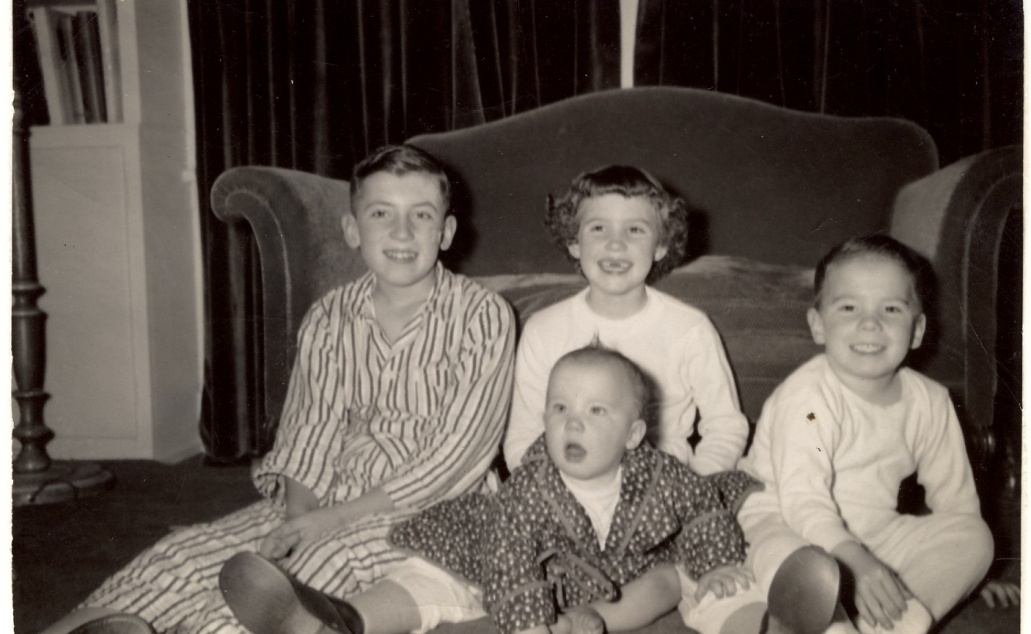
Kootenay Street: me on left then Kath and Tom with Sue in front
When the highways were realigned in the 70’s, much of our old neighbourhood was lost. The Ramsay’s lovely big house at the end of Kootenay Street, The Gully behind it which destroyed our fantastic toboggan trail, all the houses in Cottonwood Canyon and upstream as far as Vancouver Street. There was a little neighbourhood in the canyon. Harry Cox lived there in a small house where Gary Kilpatrick’s grandparents (Mr. and Mrs. Wheeler) had lived earlier. Bill and Mary Vickers ( Mary was one of mom’s best friends) lived on one side of a big house while Neil McClenaghan lived on the other There was a trail that wound down to the fish hatchery and Dago Town. The Rosemont side also lost some good houses especially that of Mary and Bill Murphy. Just across the Rosemont Bridge, a tiny dirt road led to some old places where elderly bachelors held forth making elderberry and dandelion wine and reading outdoor magazines. Mr. Oliver had hundreds of Sports Afield and Outdoor Life.
On the Hall Mines – Ymir Road side of the creek there was the old Nelson Power Plant and another small neighbourhood where the Pond family lived. There was almost always a shinny game there in the winter and early spring and my grandparents built a little house there at the end of the road. Its address was 212 Latimer St. but you went in from the Hall Mines Side. Gram and Grandpa were old then and I would sometimes see Grandpa crawling out to the woodshed to split kindling. When I offered to do it he would rant and rave. If I was working in our yard, Gram would yell across the little gully between the two houses: “ you go fishing Teddy”. This didn’t please my dad so I seldom went until I had finished the job. Gus and Natalie Madalozzo lived in the little gully and grew a large field of excellent tomatoes.
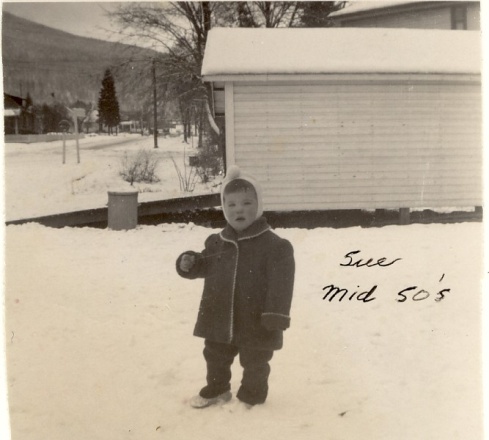
Mother enjoyed living in Nelson. She had some good friends and she really enjoyed the loads of kids that hung round our place. She was a very social person and at her best when she was around kids –the more the better. Kids loved her. She didn’t fuss over spilled milk or dirty shoes and treated all kids as if they were her own. She baked platters of chocolate chip cookies that were inhaled by the rug rats. She a happy go lucky soul and loved to tease and joke. Her main target was my father. Mom had great sport making fun of his native heritage ( his ( mother was a Metis girl from the north). She would dance around the house making great war whoops. Dad would just smile because he enjoyed to see her happy. No offense taken.
My sister Susan was born in Nelson in 1953. In 1954 mom had a fifth child – Robert Michael. He only lived for a day or so. This was a very sad day for the family and especially so for mom. Her health started to decline after that. She was not a strong person at the best of times and having so many babies in a short stretch then losing one seemed to drain her. There were some huge families in Nelson in the fifties and many of the kids went to St. Joseph’s school with Kath and me. There were the Miners who had eighteen. Leo and Art Miner were good friends who I saw often. The Miller’s of Silver King Road had twenty. I was friends with Dennis and Dick. Dick is famous for falling off the top of the Nelson Bridge when he was working on it in 1957.
How those mothers ever survived is a mystery to me but I do know that the kids did a lot of the work and even parenting of the younger siblings. Even so, it must have been hard and it sure was for mom.
In 1957, the higher grades at St. Josephs were shut down and all the catholic kids older than about 15 moved to L.V. Rogers High School which was much larger than our little school at St. Joseph’s. But LV had the right idea. They had sock hops at lunch time and the teachers seemed more worldly and informed than our dear nuns at St. Josephs. Many kids hung around the Green Door, a little store with a jukebox just down the hill. The catholic kids mostly hung around together but I made some good pals at LV such as Jimmy Rogers.
In the summer of 1958, it was back on the road again destination California. Mom was over the top. She belted out “California Here I Come” all the way to Spokane. We got a motel near a park and the river and mom drank a couple of quarts of beer and serenaded the Spokane Valley.
Dad and his friend Dick Green had a business plan: peddling light bulbs in the Golden State. They had a huge warehouse full of lighting products which still may be sitting in LA.
The first stop was Pacific Beach a fine suburb of San Diego. We spent the summer in an apartment by the beach. The beach ran for miles and had a pier where you could fish and watch the sea. I just had a little spinning rod and caught croakers and tom cod. But I also managed to hook a halibut and get him to the surface. Other anglers rushed over with a huge treble hook on a rope. They lowered it down and tried to snag the brute but it dove down and broke the line. One evening as the sun went down; a huge sting ray leaped into the air and flopped back into the sea.
We kids were among the first swimmers on the morning beach. Old guys with metal detectors were even earlier. They found rings, watches and change. We looked at houses in La Mesa and Lemon Grove but ended up heading north to the Bay Area where we settled in Sunnyvale. Sunnyvale was an agricultural town on the cusp of a huge population boom. It leaped from about 5,000 in the 50’s, 50,000 a few years later then 150,000 plus by the mid 60’s. Thousands of hectares of some of the most productive land on earth was attacked by development and covered over with housing, malls and parking lots. It was astounding but no one raised a hand. Wetlands, orchards and farms were swept away and replaced by huge subdivisions with names like Lake Wood Village and Oak Grove Estates.
We lived on West McKinley Avenue and I went to Sunnyvale High, a large prison like institution with thousands of students. I didn’t care for it but made some great fiends there. Dennis Pippin and Jim Baer were some of my closest friends ever along with Dennis David and Dick Anderson. I graduated from Sunnyvale in 1961 after a sabbatical working on the S Half Diamond Ranch at Skookumchuck, BC.
Mom was in her glory in Sunnyvale. The Cherry Chase neighbourhood of West McKinley was very friendly with squads of kids. The neighbours had lots of parties and coffee gatherings almost every morning. The ladies would migrate from house to house in their Hawaiian Mumus or bathrobes then camp in the kitchens and gossip about the neighbours who weren’t present – Mom loved it.
After a few years we moved to a nearby community called Los Altos. It was a bigger house with a nice backyard with oak trees and a seasonal creek. We even built a swimming pool which dad and Tom loved. Tom became very strong from swimming. I had worked at Ampex Audio after high school but mom and dad bugged me constantly to upgrade my education. Most of my friends from Sunnyvale High had moved on to Foothill College, a two year community college just a mile or so up in the hills from our house at 2041 Fallen Leaf Lane. It was a lovely campus and when I discovered that most of my old pals spent most of their time going to parties and drinking beer at the Roundtable Pizza Parlour in downtown Los Altos, I felt right at home. To my great surprise, I did not partake that much and got good grades. I worked at a good job at Bill Steffan’s Chevron on Stevens Creek Boulevard. The gas station and shop were part of a small mall with a pizza parlour called Pagliachi’s which became a major hang out for my friends and me. For awhile’ I moved into an old house on El Monte Avenue we called the Sugar Shack. It was great fun until mother caught me in bed with my girlfriend one early morning. The party was over. She insisted I move home and register for the draft. Like her parents, she was a patriotic republican and rather straight in some ways.
In 1964, I graduated from Foothill and moved up to Humboldt State University in the redwoods where I graduated in 1968. In 1965, the family again packed up and migrated back to Nelson. While we were living in Los Altos, mom’s health declined further. She started to have serious back issues( she had fallen out of a tree as a girl) and had to be hospitalized occasionally. I wonder if part of the reason we went back to BC was the Canadian Medical Plan. One weekend in a hospital near Los Altos cost mom way over one thousand dollars. While in Sunnyvale and Los Altos, dad worked as a car salesman which I don’t think he cared for much. Back in Nelson, he did the same for awhile then sold real estate. We lived in Grandpa and Grandma’s summer home across the lake from Nelson. The house was very old (it once served as a powder house for Fred Hume’s hardware business and dated back to the 1890’s.) There was neither central heat nor modern appliances so it must have been hard for mom. There wasn’t even a road until 1959. Of course everyone loved it when it had boat access only. Then it was truly a summer home and only a few people lived on the North Shore across from Nelson. Mom and dad built a new house in 1967 and things got much easier for mom. But with the kids gone, there wasn’t much for her to do. I was still at Humboldt then, and later down on the Island, Kath was at Gonzaga and Tom was at UBC. Sue was still mostly home but mom was used to gangs of kids in her face. They rented the old ranch house until Sue got married and a new place was constructed where the old house was. Several young couples like Steve and Gerry Ward rented the old place and they provided great friendship for mother. But gradually that started to fade. Dad was more and more occupied by his business and mom became very lonely and inside herself. Her dad had died when we were still in California and she lost a very strong anchor. At some point mom began to take what she termed a muscle relaxant. It was in fact Valium, a benzodiazepine that becomes addictive if taken for more than a week or two. Mom took it for years and no one had the heart to try and stop or reduce her intake. The docs just renewed her supply when she ran out. Dad tried to limit her intake and was slightly successful but hated being her jailer. She had no other interests and would rarely rise out of bed. The drug had become just about her only focus. The family became increasingly concerned for her welfare but she continued to claim she was fine. At one point in the winter of 1987 she came downstairs to visit me and when she saw I was drinking a beer, she got excited and said “oh boy, let’s have some beers”. She sipped one for about five minutes then retreated to her upstairs bedroom saying she was too tired to finish it. Mom wasn’t much of a drinker but occasionally went on a toot. Mixers at hockey games were a favourite format but there were others. One time Sue and her good pal Patty Troyan were coming home from the drive in at Ten Mile when they saw the RCMP had someone pulled over on The hill on Johnstone Road (this hill is gone now) – it was mom. They asked the cop what had happened and he said “look at my car”! Mom and dad had a scrap so she went over town to Mother McKim’s and had a few snorts with Ruth and Red. When the cops pulled her over she was searching for her drivers’ licence and popped the car out of gear. It rolled down the hill and crunched the cop car. Dad was furious but he had infinite patience with mom and ended up having a good chuckle. To top it all off, mom was wearing a wild looking wig at the time. The cops must have been wondering what kind of characters live along this road. Sister Sue ended up working for the RCMP not long after the incident.
Tom and Sue both reported querying her about her health later on that winter expecting to hear a litany of complaints but she was very positive and forward looking. They were both pleased. A few weeks later, she must have been suffering big time pain. She took a huge dose of ASA and died in the hospital – she was only 67 years old.
To this day we have no idea whether she was suffering from physical pain or withdrawal from the benzo. I think it was probably both and that leads me to wonder: Is it better to give deeply addicted people what they need or try to limit their intake? Of course individual circumstances will vary widely and the decision will always be very difficult but I will say that I have concluded that for older people with very limited will power and poor general health, I would favour just letting them continue at least until a clear window of opportunity for progress opened.
I think the doctors of Nelson, agreed with me and left things to dad to try and deal with. At one point years before her death, Dr. Carpenter took over her case for some reason and managed to wean her. He sent her to a rehab centre in Penticton for a month or more and she came home absolutely her old self. I think she lasted about a week or two then she was back in bed with the pills. Constant motivation and support were needed to keep her upright. I think Dr. Carpenter managed to scare her into submission but in the long view, that wasn’t enough to overcome her needs
She had been taking Valium for about 30 years. Her doctor in Los Altos had started her on them. At the time they were very popular and widely prescribed for various nervous afflictions and it was quite some time before “mothers little helpers” were discovered to be addictive. For our family it was a hard way to learn. Indeed.
